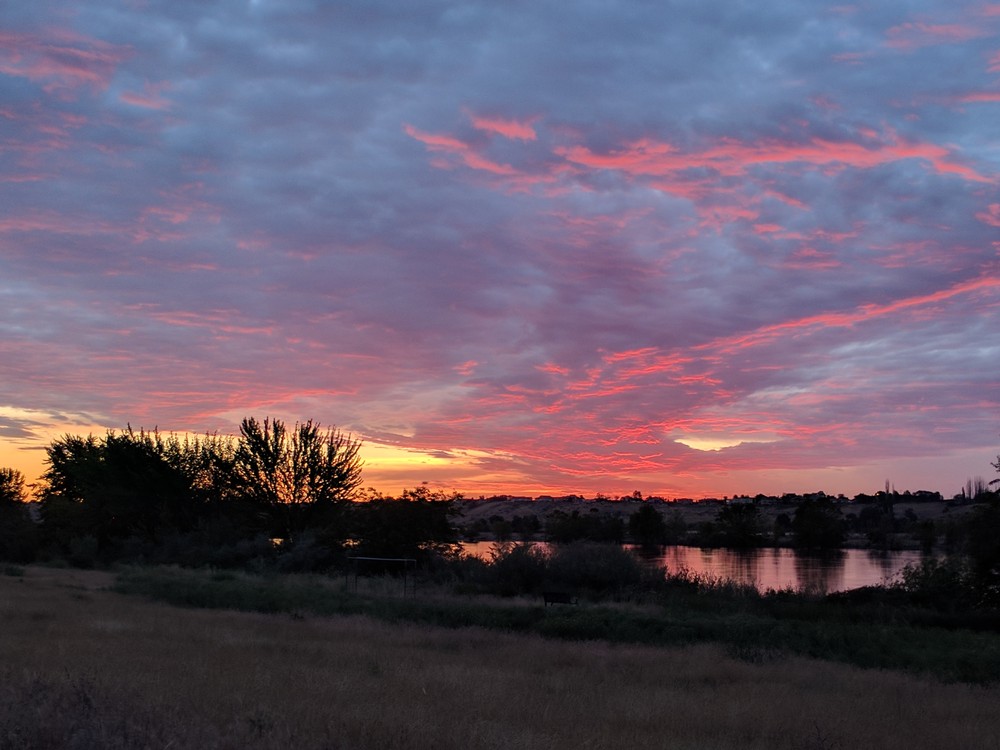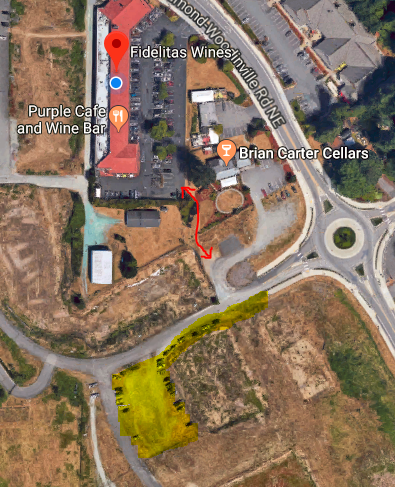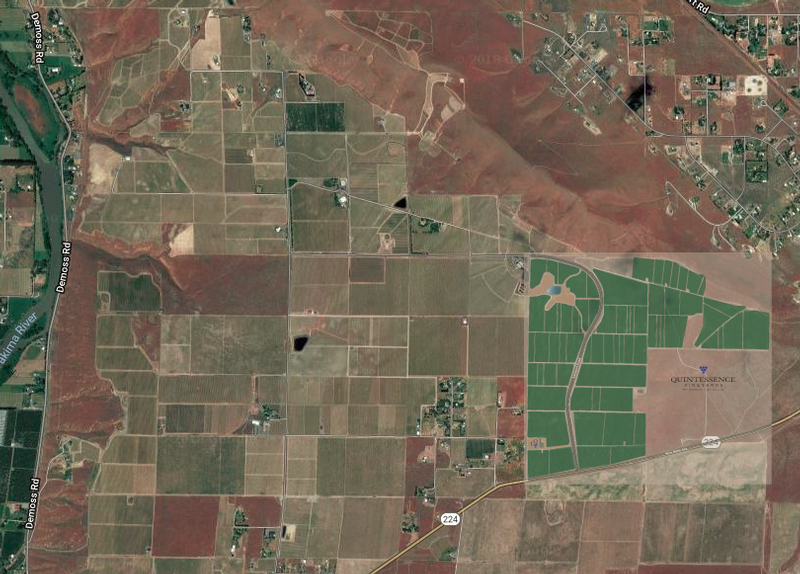Member tips for picking up in Woodinville
First off I'd like to apologize to our members who have their wine shipped or pick up at our Red Mountain tasting room - I promise I'm not forgetting about you and thank you for being loyal members! But as our Woodinville tasting room manager, I figured I'd speak to my strengths. Even if you aren't one of our members who picks up their wine in Woodinville there still should be plenty of good information in here.
Club-Only Weekends
- Every time we release wines to our Optu members (i.e., February, April, September, and November) we are club-only in the Woodinville tasting room the following 2 weekends - both Saturday and Sunday. If we do have new releases to pour this is when we'll feature them in the tasting room. For example, in September we had a little bit of our 2015 Estate Cabernet still in stock after club allocations were processed and we poured it in the tasting rooms September 15-16 & 22-23 and ended up selling out.
- Keep in mind, these weekends end up being some of our busiest of the year. Other options:
- Come early! We open earlier than most tasting rooms in the area: 11am every day. Start your day at Fidelitas with some Optu White instead of mimosas.
- Friday afternoons are a great time to pick-up as well. Leave work a little early to beat the weekend rush.
- Pick up during the week - we're open 11-5 everyday of the week
Preview Tastings
If you haven't been to one of our Preview Tasting you need to check them out. There's one in January and one in July - available in Woodinville and on Red Mountain. Taste through the future releases and choose your club allocations as your tasting the wines. It's the best way to make sure you get exactly what you prefer for your allocations.
Preview Tasting is scheduled for January 13th in Wodinville at the Hollywood schoolhouse (a 2 minute walk from our tasting room) and January 13th on Red Mountain - keep an eye out early December for the email to make your time slot reservation
Plus, you may get the chance to meet our rockstar winemaker:
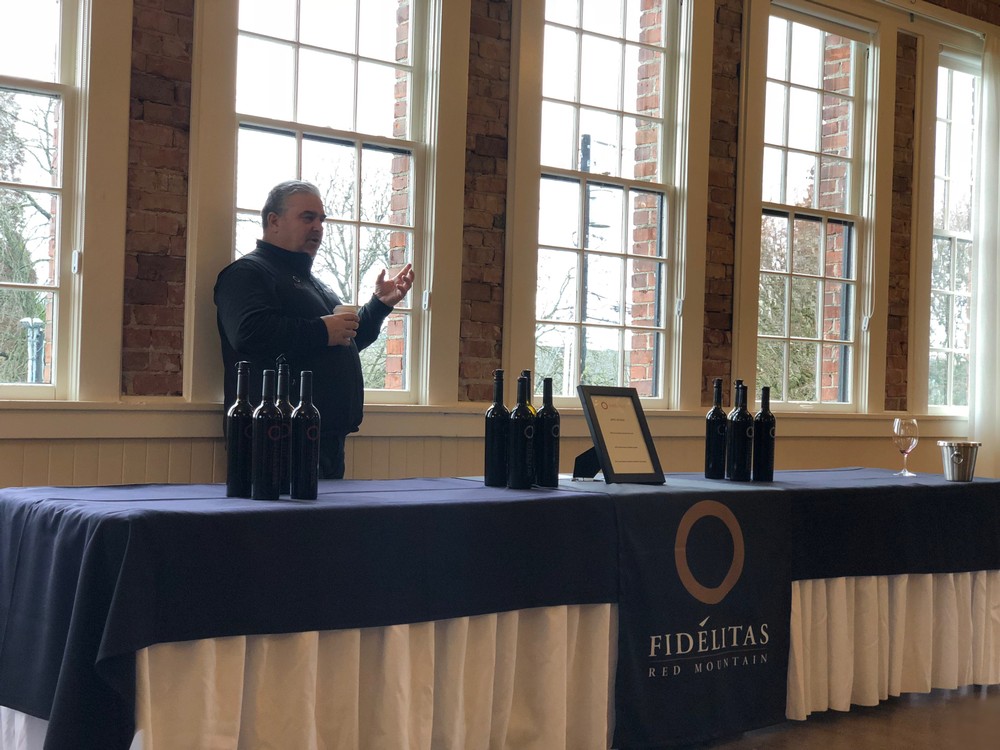
- Pay attention to the # of cases produced - many of our wines are limited production and they'll end up selling out before they're released. Because they are so limited, these preview tastings are the only time we are able to pour our wines before they are released. These wines from last year were sold straight to our club members:
- Even if you can't make it to the preview tasting log in to our website to make your selections. You can change your mind later (just make sure to do it before the advertised deadline) but it doesn't hurt to choose as soon as possible to make sure you get access to our most limited releases.
- `Call/email our club team (509.554.9191 - club@fidelitaswines.com) or come visit us in the tasting room - we have a good idea of which wines are going to sell out fast
Other
Check out our recently updated Wine Club FAQ page
Next time you're in the tasting room ask us if we have anything else open - we often have club-only pours available!
If you're finding it difficult to make it out to Woodinville we also offer flat-rate shipping on club allocations + we recommend shipping it to your business address so there's always someone there to sign
Follow us on istagram, facebook, and check our events calendar which is updated frequently
On busier days there is parking available behind Brian Carter - parking area highlighted - red arrow is a path that leads to the parking lot:
5 Takeaways from Staff Vineyard Tours
1) The uniquness of the Fidelitas Estate Vineyard: Charlie and Dick Boushey are bringing 60+ years of winemaking/vineyard experience to collaborate on one 12 acre, 5 varietal, 6 Cabernet clone vineyard, with one winemaker's vision in mind. A little different than the standard Washington model where some of the top vineyard sites like Red Willow, Champoux, Quintessence, Ciel du Cheval, Boushey, etc... are selling to 30-40 different winemakers.
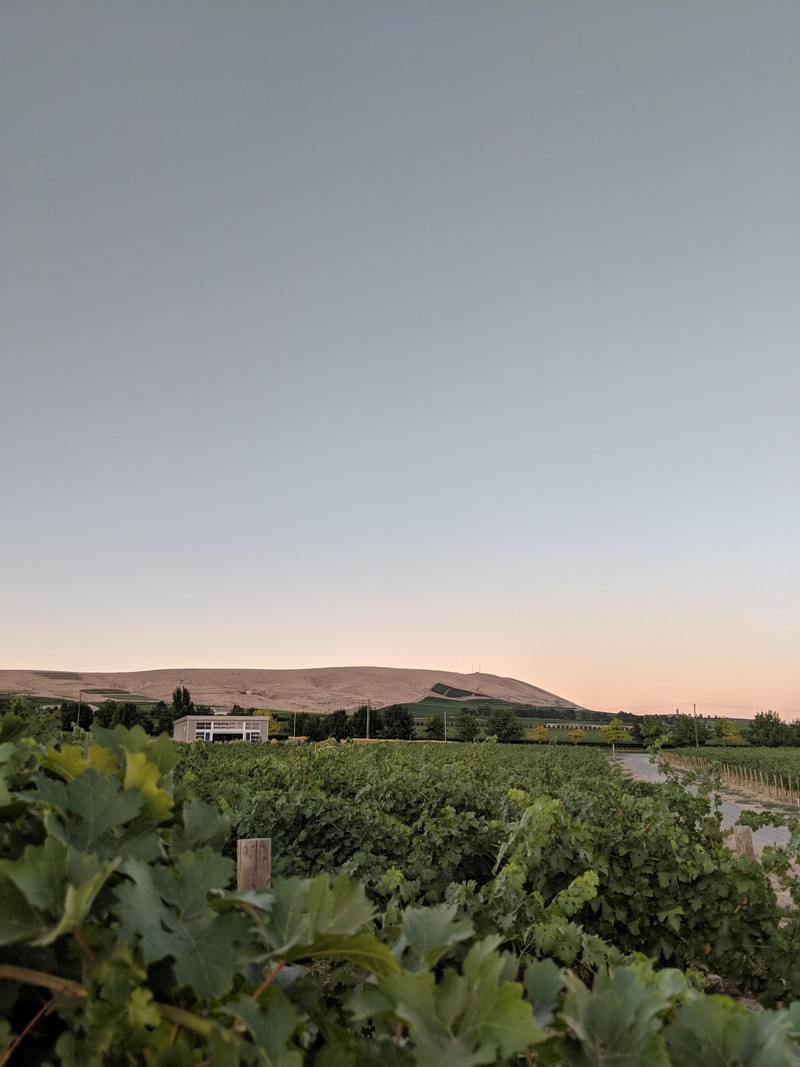
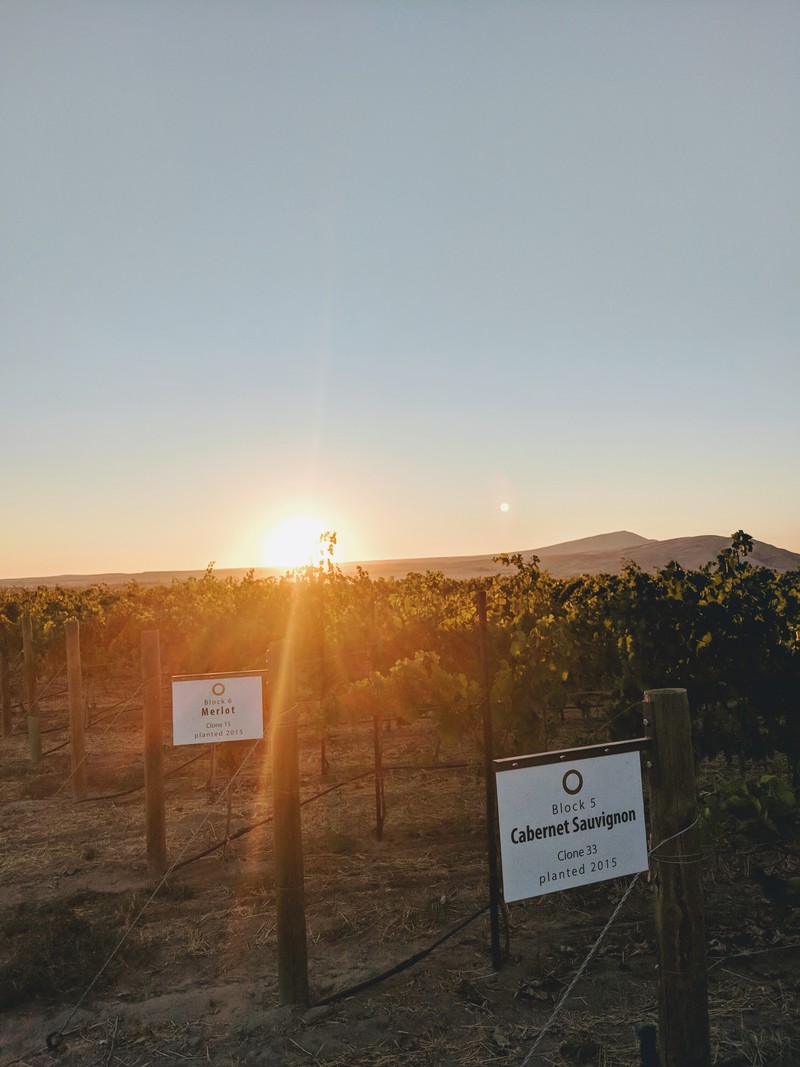
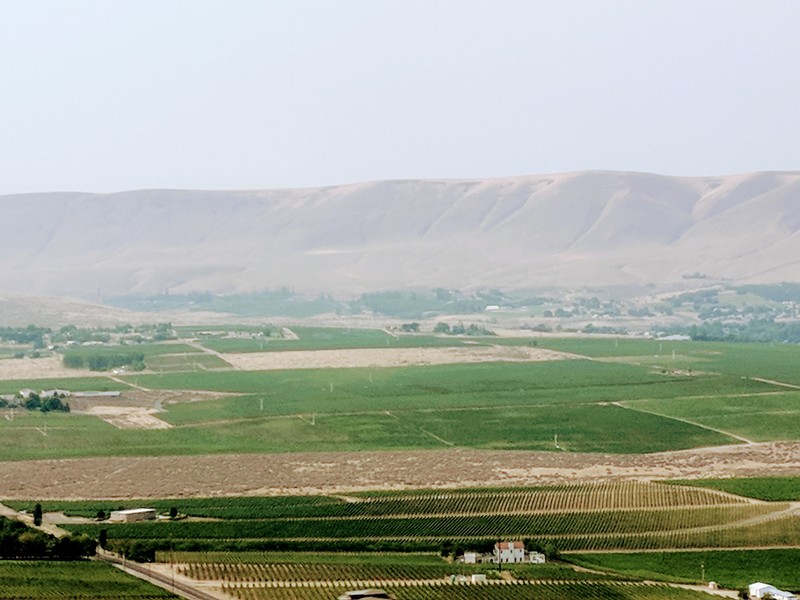
2) Don't sleep on the food in Tri-Cities: we had amazing sandwiches and salads from Graze and pizzas from Brickhouse for staff lunches, and (hot take alert) the best Barbeque in the state of Washington: Porter's in Richland, for our all staff dinner.
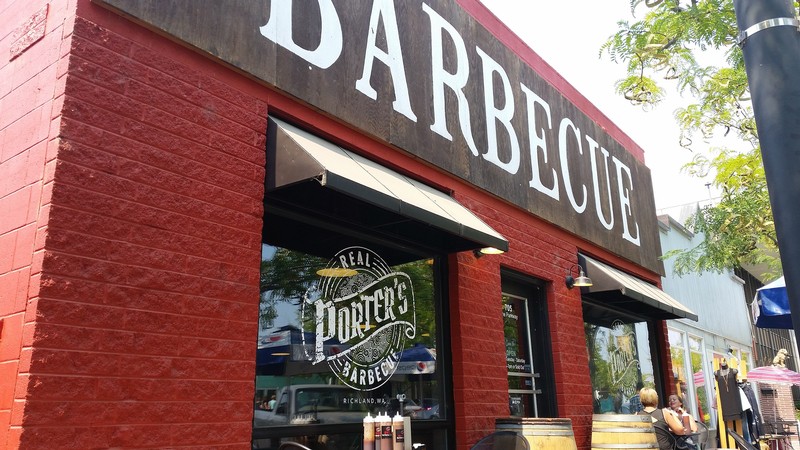
3) Ciel du Cheval is a jungle and Quintessence is groomed like a golf course - this is not meant as a slight, but as a compliment to both parties. These are some of my favorite vineyards in Washington and more than anything shows the beauty of different vineyard management practices.
CDC Cab Franc

Quintessence Cab
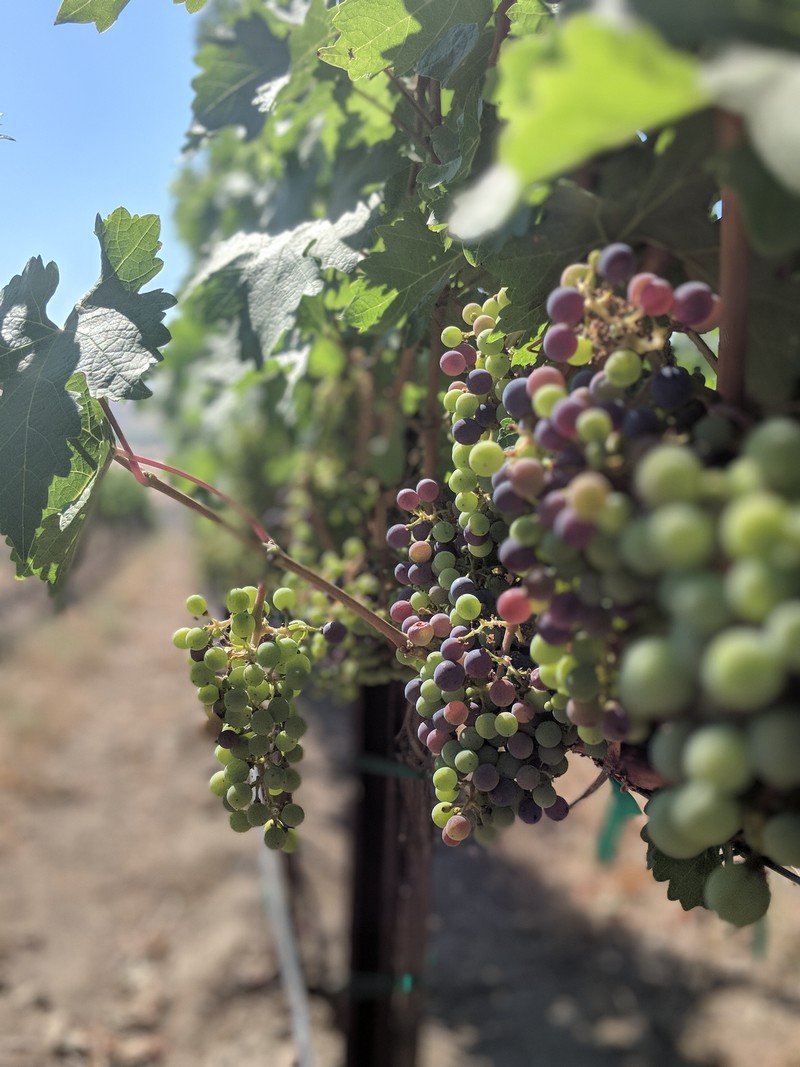
4) Our winemaking team is nerding out about fermentation vessels more than ever . The team did a tasting in the production facility of one lot of Clone 169 Quintessence Cabernet, but fermented in 5 different oak containers: new roller fermenter, used roller fermenter, upright wood tank, etc...
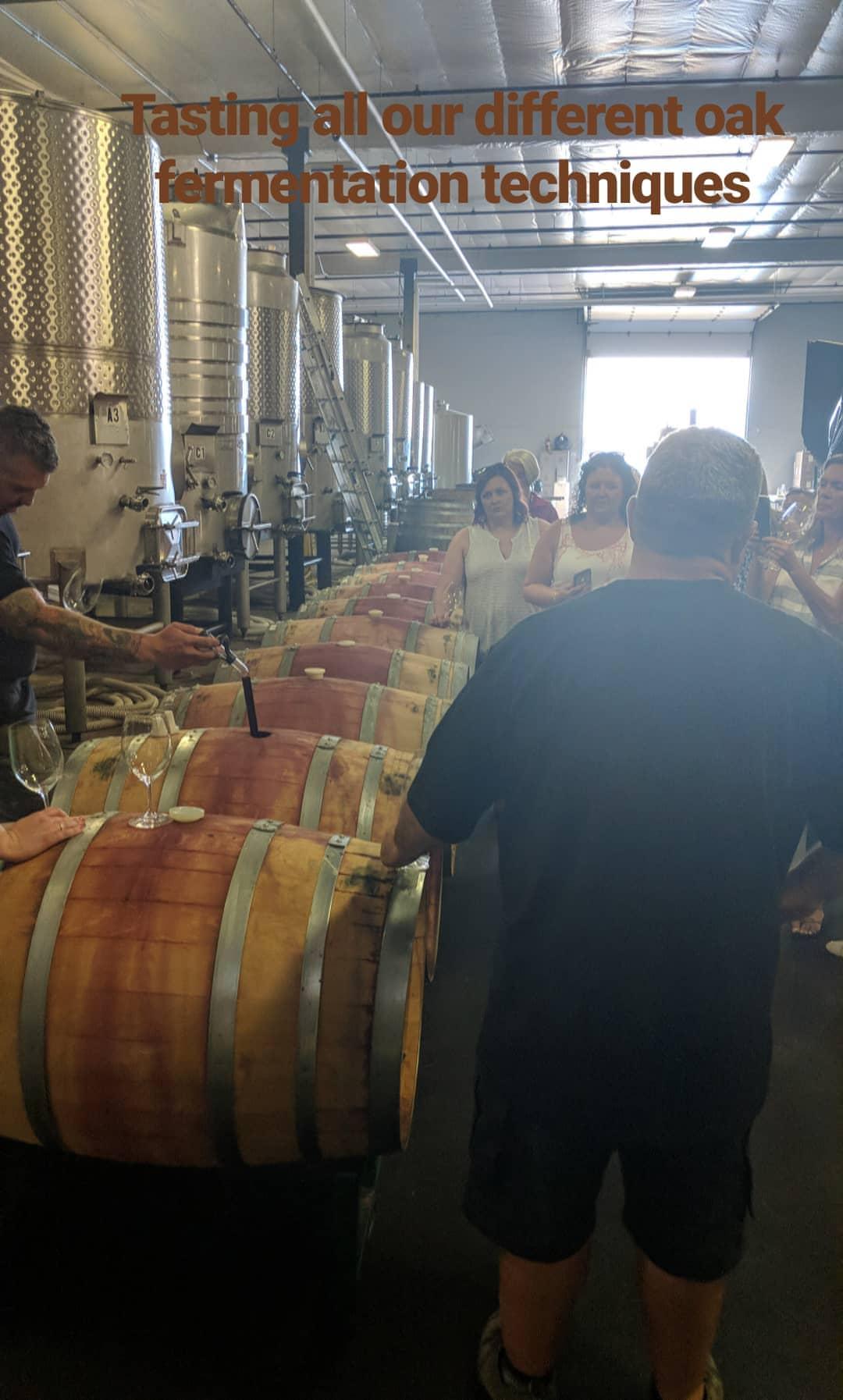

5) Calling Red Mountain "one South-Western facing slope" is technically true, but is a bit of a disservice to the diversity of growing sites within the AVA
A block of Malbec from the Canyons vineyard, named after the extreme slopes and unplantable canyon that runs through the planting:
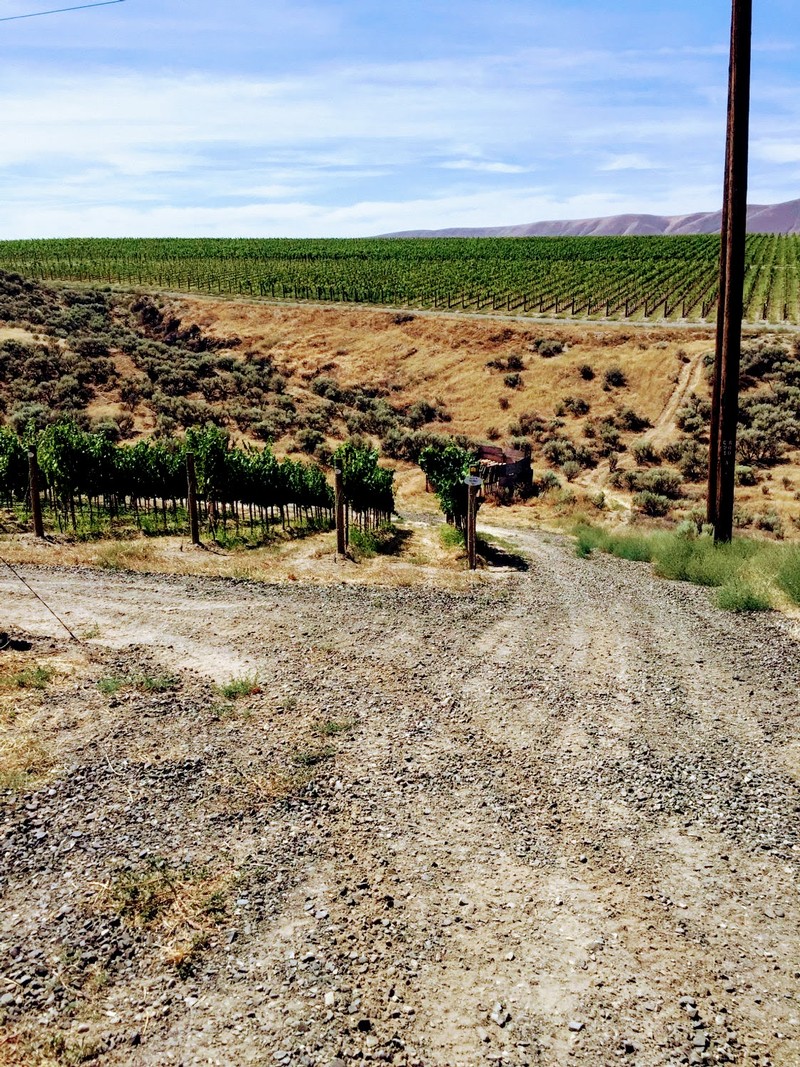
Shaw Vineyards tucked in the very northwest corner of the AVA boundaries - you'll have to take a few dirt roads to get a peek of this planting:

On the opposite corner of the AVA is Quintessence which has some plantings in rocky soils that are south-eastern facing:

None of these pictures come close to doing it justice - go out and explore Red Mountain for yourself! (just watch out for snakes and badgers)
Happy Father's Day
Looking for some inspiration I decided to scroll through my camera roll to see what I was up to Father’s Day of 2017. I came across a “photo shoot” I had done for a profile picture on the website and Jess happily pointed out that I was doing the “Wine Boss” pose:
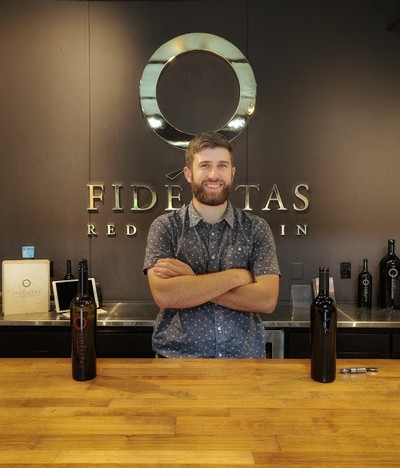
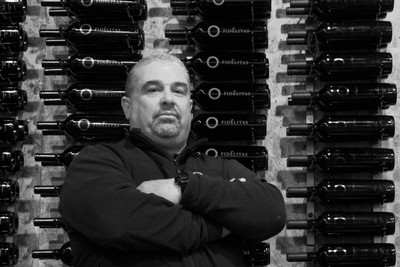
Mine's not nearly as epic, but I'll chalk it up to the black and white filter.
We also recently struck a very similar pose in my "Microfermentations" blog post and the Seattle Times' "Cab King of Red Mountain" writeup:
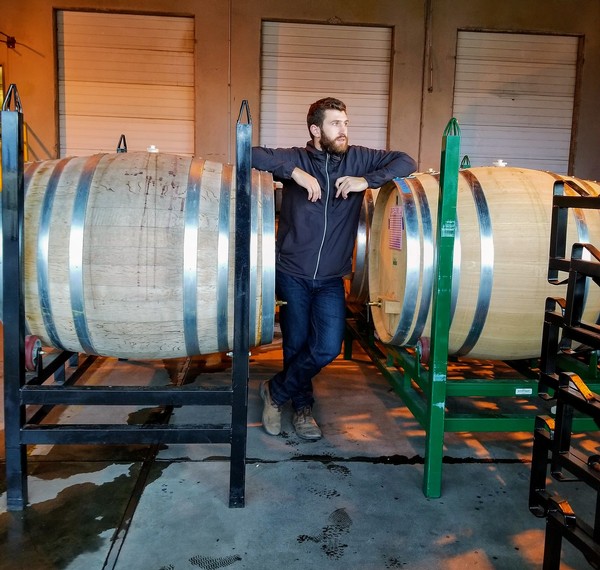
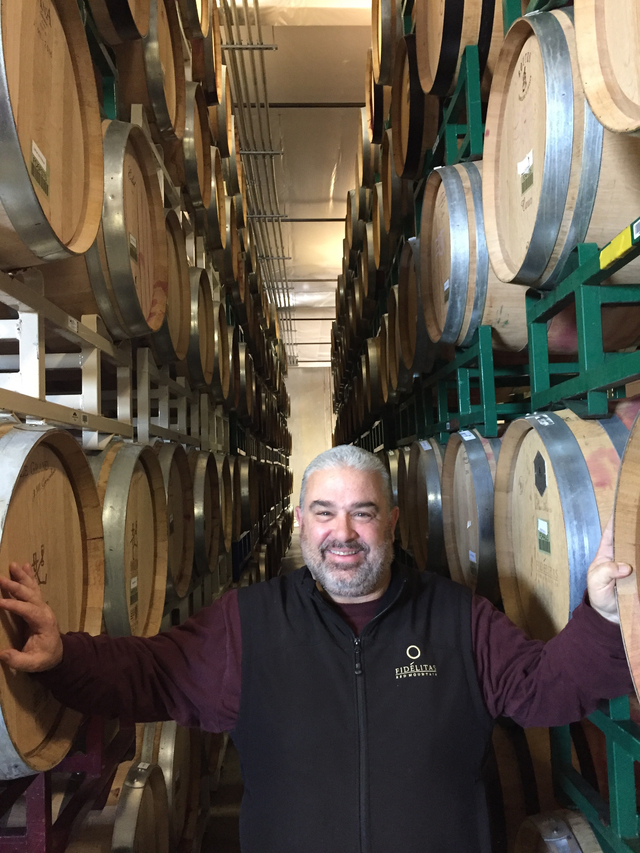
(our contact info is on the website if you work with a winemaker modeling agency)
These pictures are a reminder of how lucky I am to have a dad and mentor who's laid out the blueprint for me to follow, but at the same time is encouraging me to do it in my own style. He's an incredible winemaker but has always been a father first to me and my sisters.
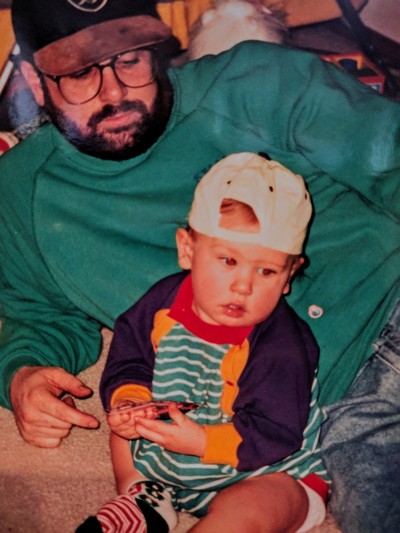
Hope everyone has a wonderful Father's Day!
Micro-Fermentations: a Labor of Love
With the release of the single vineyard Quintessence Cabernet early last month (the first single vineyard Cab of the year to make it to the tasting bar), a common discussion in the tasting room has been how many different "micro-fermentations" we do here at Fidelitas.
By this I mean both:
a) the methods: different oak vessels, metal vessels, different types of yeast, etc... and


and
b) the numbers: we have lots of unique tiny lots of different varietals and vineyard sites from all over Red Mountain which we crush, ferment, age separately + even within some lots of the same fruit, "Estate Cabernet" for example, we'll separate the same fruit into what I like to call micro-fermentations which only result in about a single barrel of finished juice (1 barrel = approximately 25 cases).
I specifically remember tasting the 2016 Estate Cab during last Christmas break, of which we have about 14 barrels - those 14 barrels are first broken down by the 2 different clones we use for our Estate Cab: 7 barrels of Clone 6, and 7 barrels of Clone 2. Within the 2 groups of clones, each barrel was fermented on its own in a different vessel, meaning we'll have 14 different "wines" which will need to be taken care of separately for the entirety of its 2 years of aging until it's finally blended together at the end with the other Estate Cabs!! Wouldn't it be so much easier to just throw all of the Estate Cab in one big stainless steel tank and call it good? It would certainly make for shorter days during harvest.
However, our winemaking team has found that the micro-fermentation method is well worth the effort: it adds a great deal more complexity of flavors and texture and gives us a more intimate hands-on approach with our fermentations. I liken it to a craftsmen spending time meticulously working on the individual pieces before putting the masterpiece together.
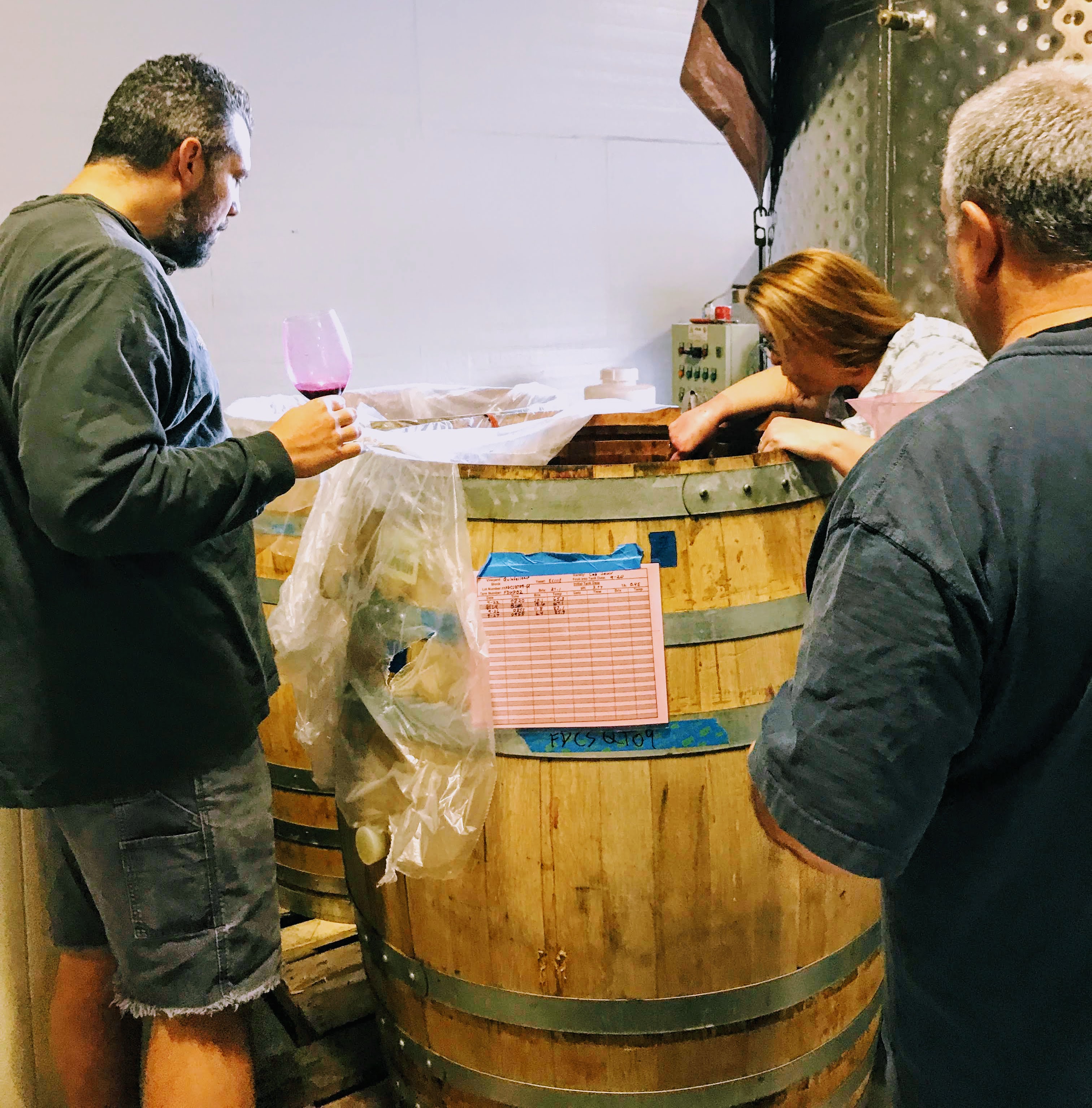
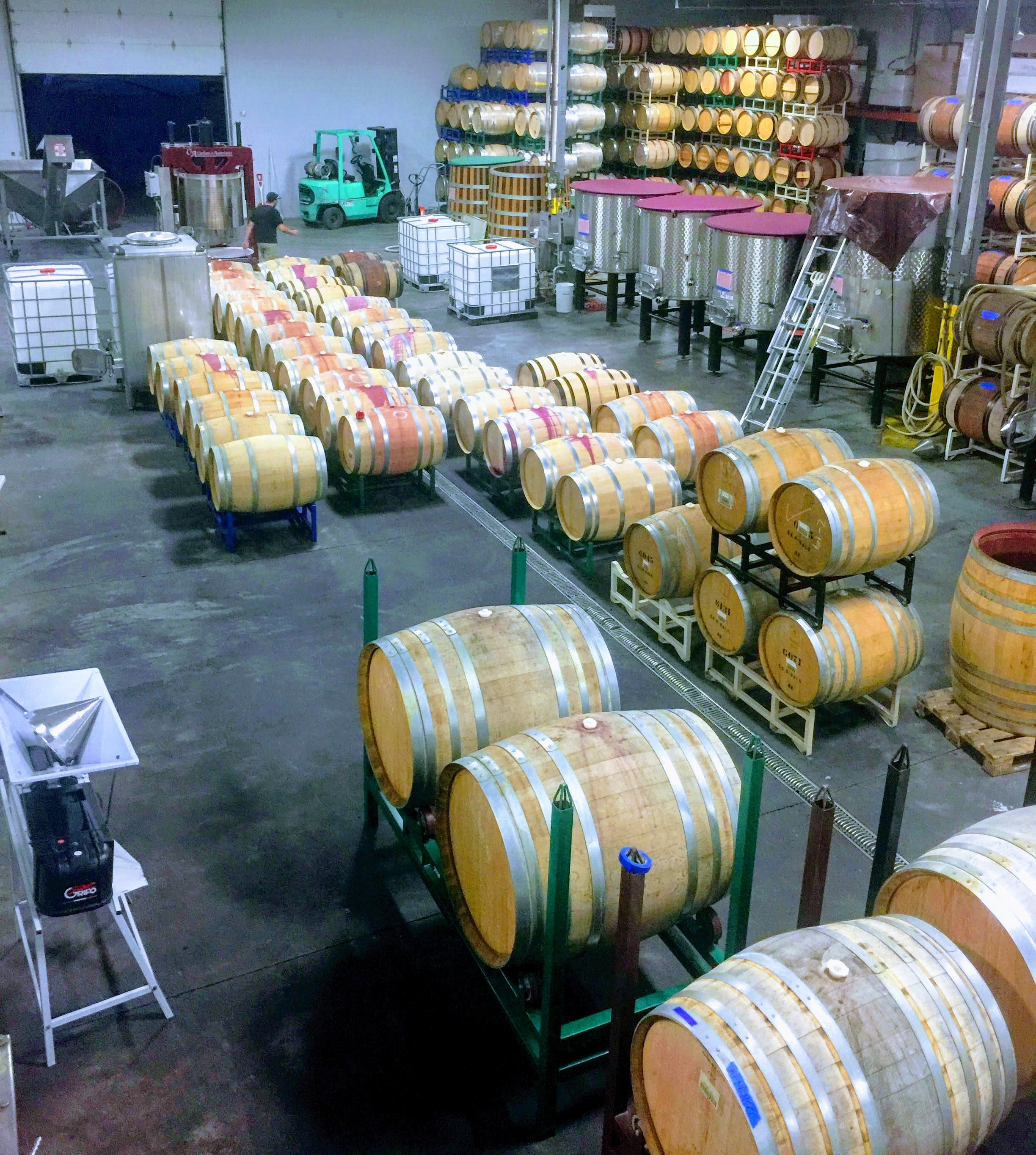
Another thing I'm reminded of when having discussions like this is how easy us second generations winemakers have it. Winemaking is all about experimenting and learning from your results - trial-and-error. However, unlike a chef who can make a new dish, try it, throw it out and immediately start over; winemakers only get to make wine once a year. The learning window is around 2-3 years until you have finished wine or even 5+ years depending on how much bottle time. Or even a decade if you're experimenting with planting differnet clones of Cabernet and how those result in a finished wine!! Lucky for guys like me, I have winemakers like my dad who have been doing this trial-and-error, and continuous gathering of data and experiences for multiple harvests who can pass their knowledge along. And for this I am truly grateful.
- Will Hoppes
Vendimia 2018 - Making Some Argentinian Malbec
Back in 1988 as a recent graduate from UC Davis' Viticulture and Enology graduate program, my dad was hired by Mike Januik (a fellow Davis grad) at Snoqualmie/Langguth near Mattawa, WA for his first winemaking job. After doing a harvest at Waterbrook in 1990, he rejoined Mike as a part of the winemaking team at Chateau Ste. Michelle, and worked alongside him for just under a decade, becoming the head red winemaker in '93 as Mike was serving as the head winemaker. They worked on the the first few vintages of the Col Solare project together from '95 to '98 and helped push Washington onto the world scene with the wines they crafted together during their time at the Chateau. Itching to start their own projects they both left around 1999, Mike staying on the west side of the state and creating Januik and my dad starting Fidelitas on the eastside. But you probably know this already, it's been well documented and touted by us throughout years.
What you may not know is that Mike's son, Andrew, who apparently I spent a lot of time hanging out with when I was too young to remember, has stepped into a winemaking role at Januik, and has his own "Andrew Januik" label since 2011. He started working part time at the winery when he was 13 and shortly after started working full time during the summers - a sentence that sounds all too familiar to me.
Since starting to manage our Woodinville tasting room about a year ago I reconnected with Andrew - which felt natural to say least with how much we had in common with our lives following very similar paths. After many glasses of wine, nights at karaoke bars, times spent dog-sitting for him, and quests to find the best beers in Seattle we became good friends and thought it'd be and awesome idea for me to join him for a Malbec project he had going in the famed Uco Valley region of Mendoza, Argentina. Not wanting to pass up on the opportunity to travel and learn from a talented winemaker like Andrew it was a no-brainer. Below are some highlights of past few weeks spent harvesting in Argentina:
We flew into Buenos Aires after a layover in London (this is what happens when you buy tickets at the last minute) and spent 1 night there before heading over to Mendoza. We spent hours and hours exploring the city with plenty of stops to drink beer and play cards:
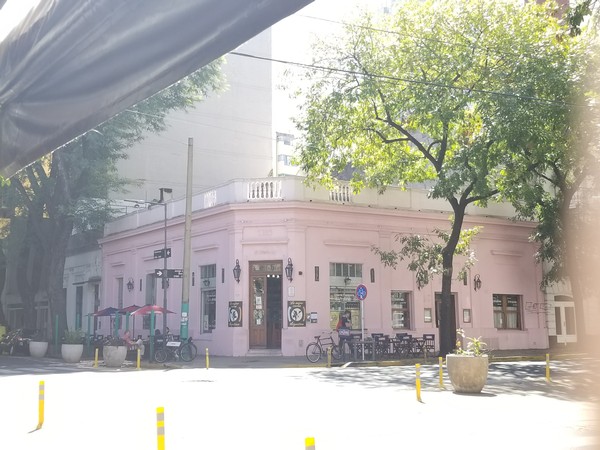
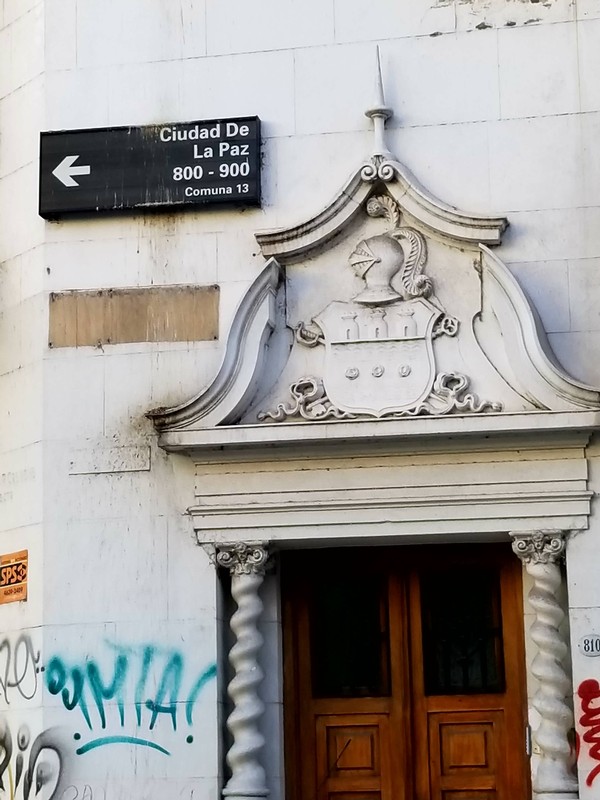
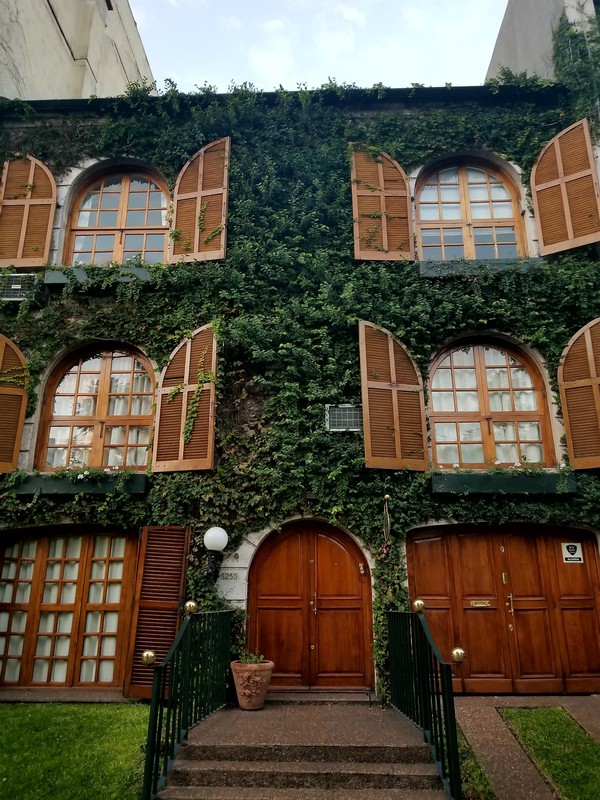
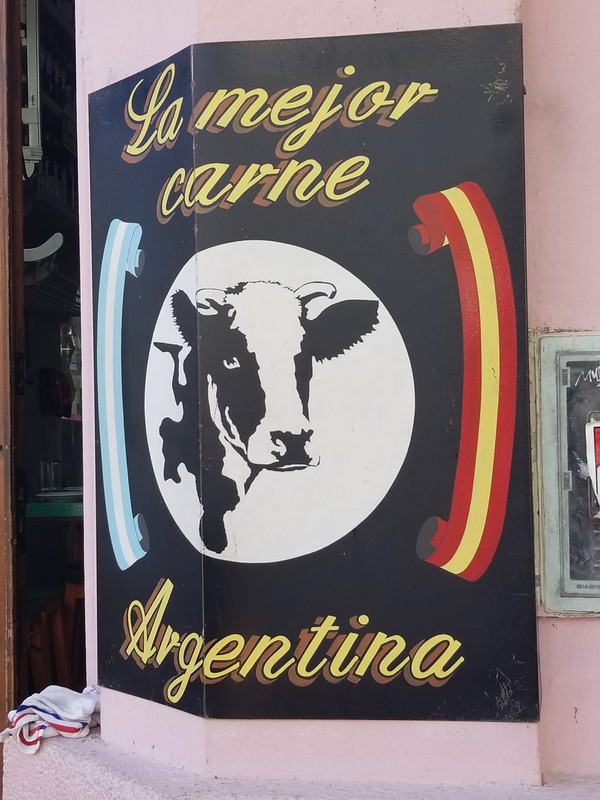
Then over to Finca Agostino in Mendoza to check in on Andrew's 2017 Vintage:
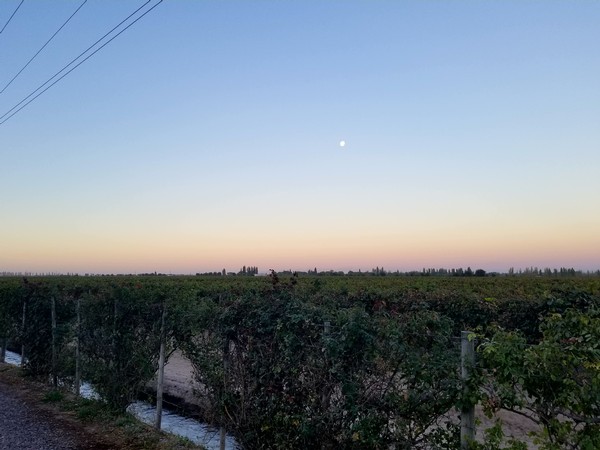
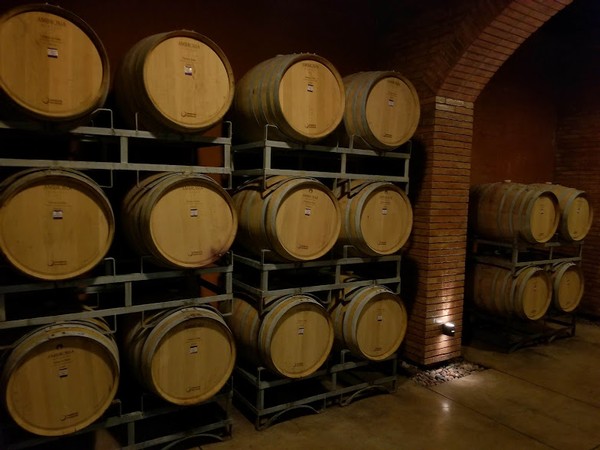
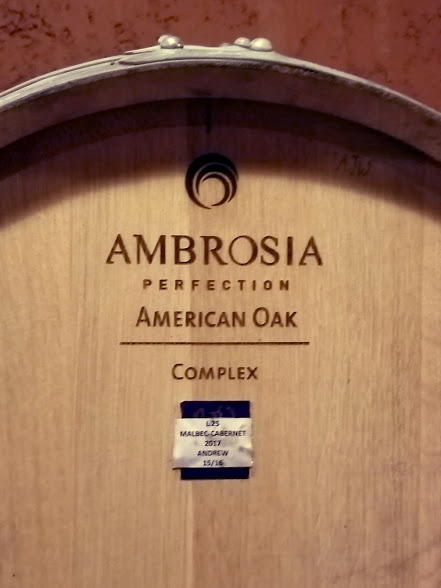
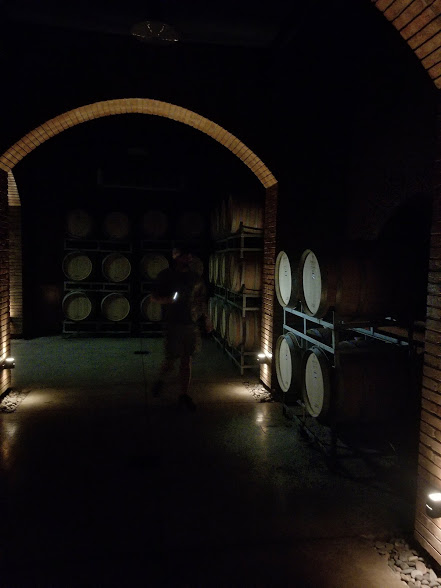
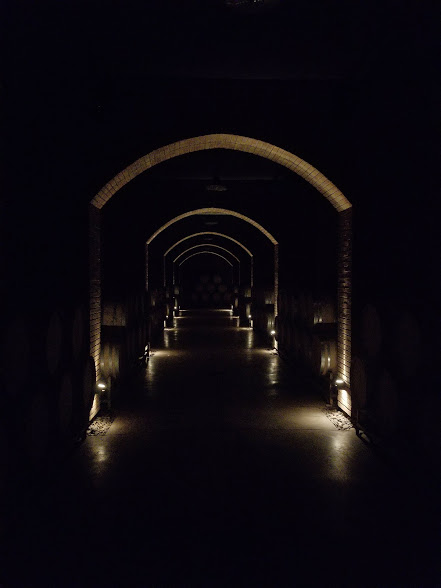
Checking our fruit the day before the first pick:
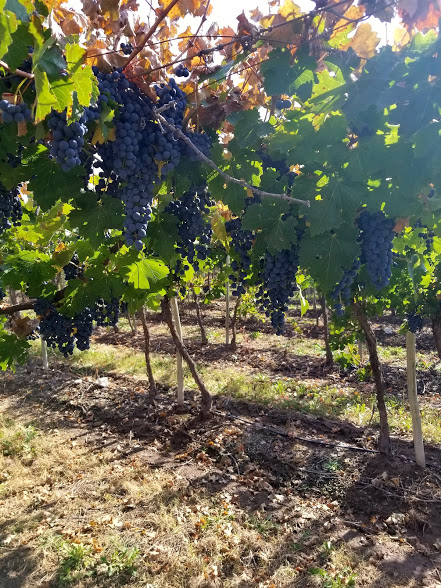
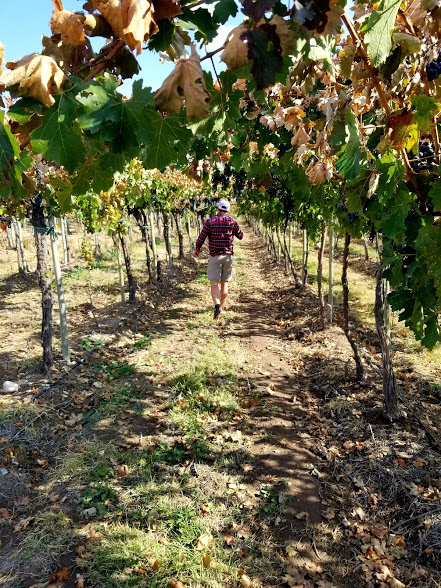
Note how high these Cabernet vines are planted
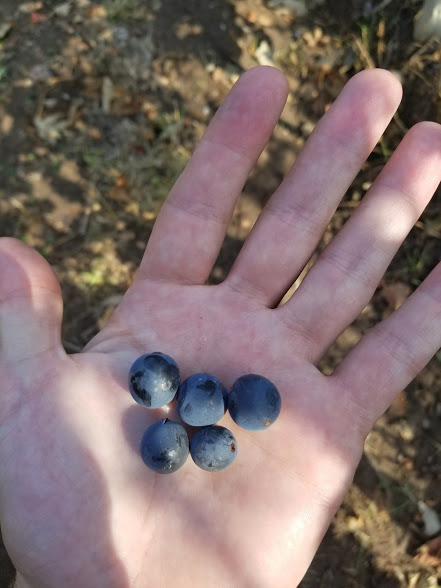
Malbec
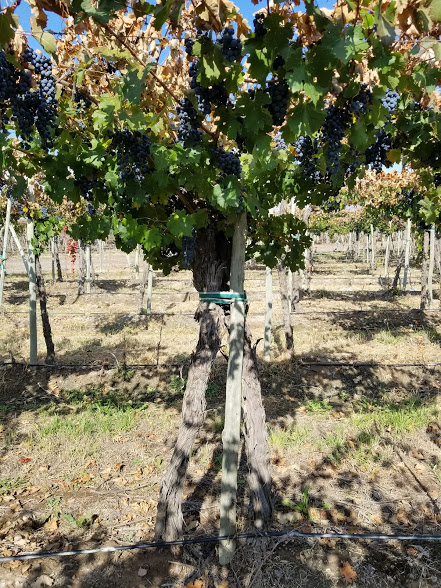
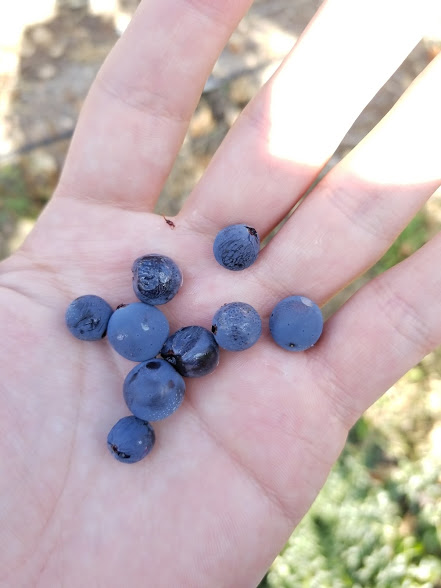
Cabernet
First day of crush at O Fournier
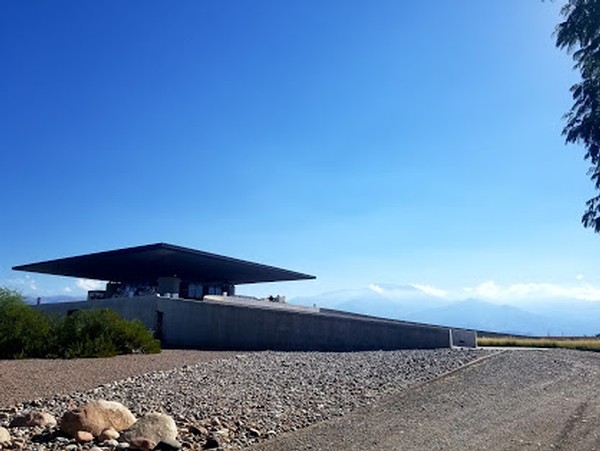
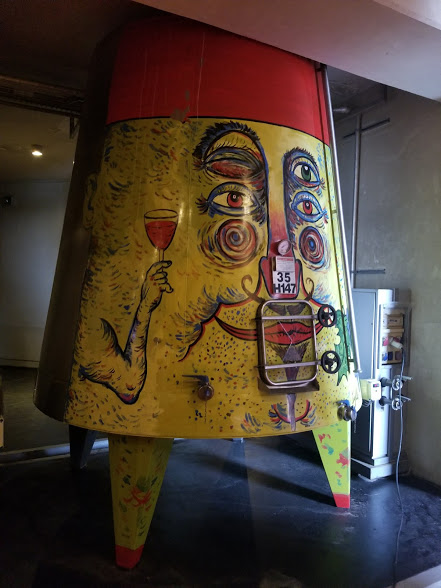
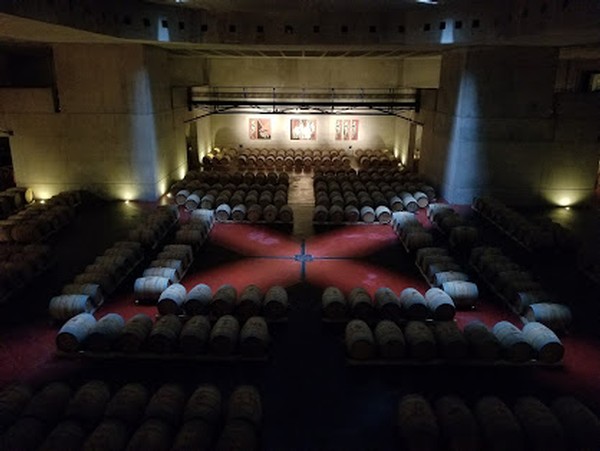
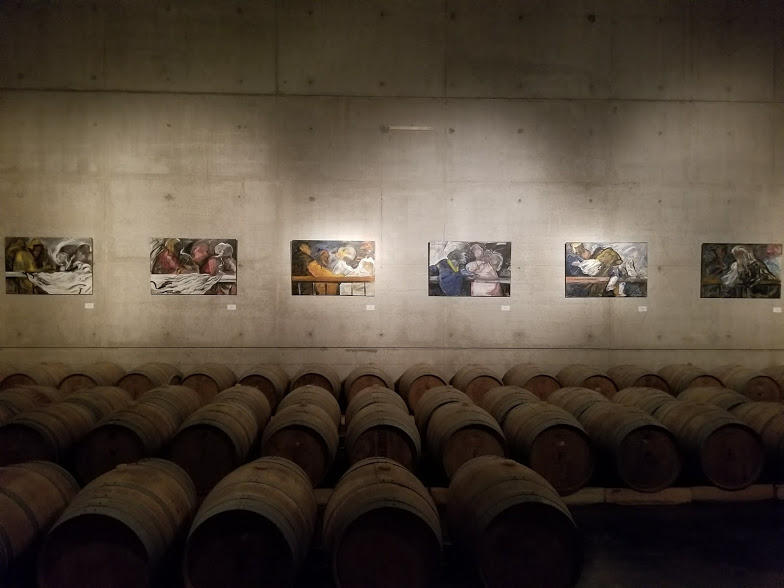
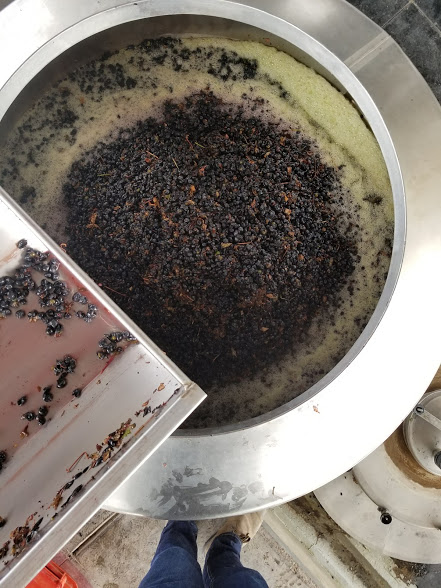
Early Morning Pumpovers with a view
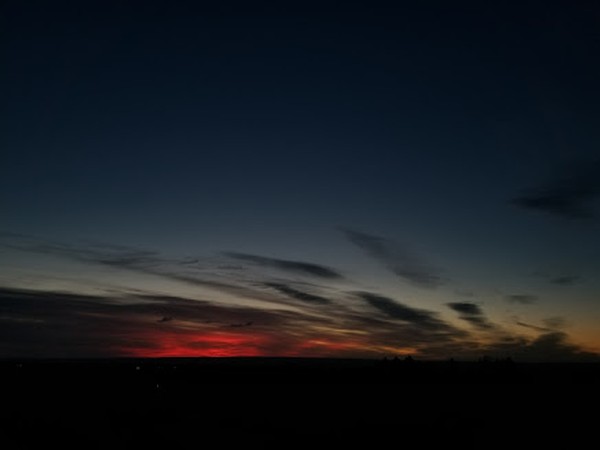
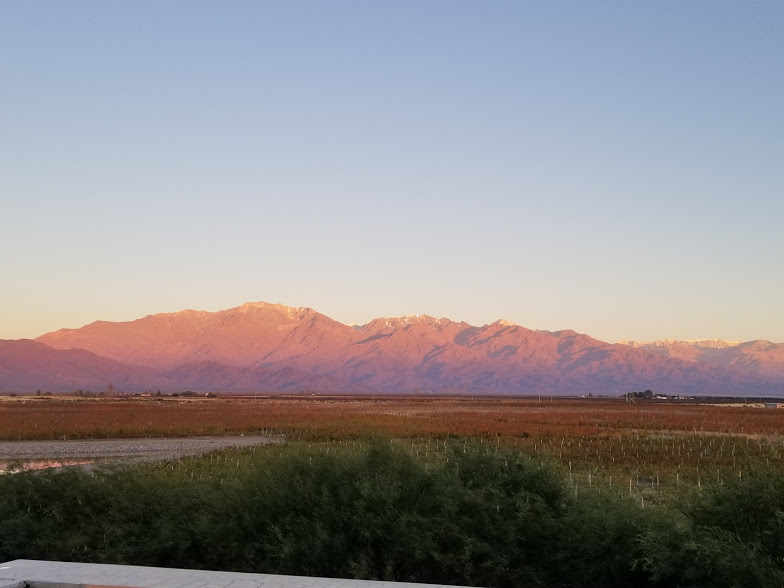
If it weren't for the snow-capped Andes in the background you'd think this was Eastern WA
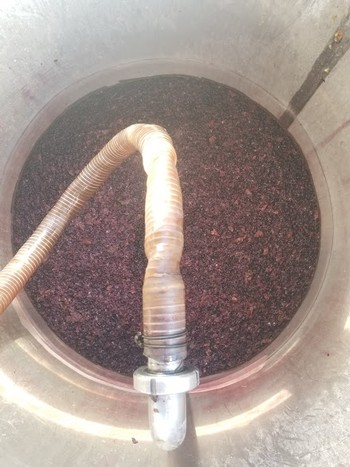
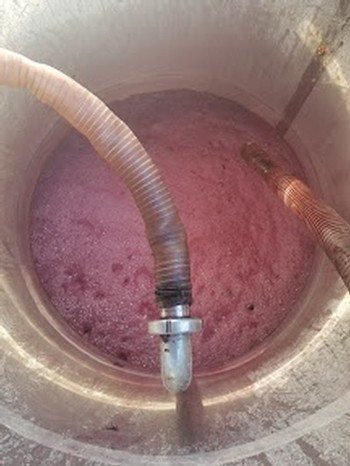
Before and after pumpovers
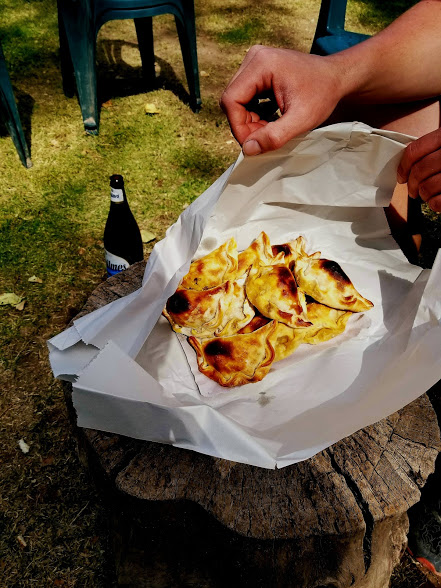
With plenty of breaks for empanadas
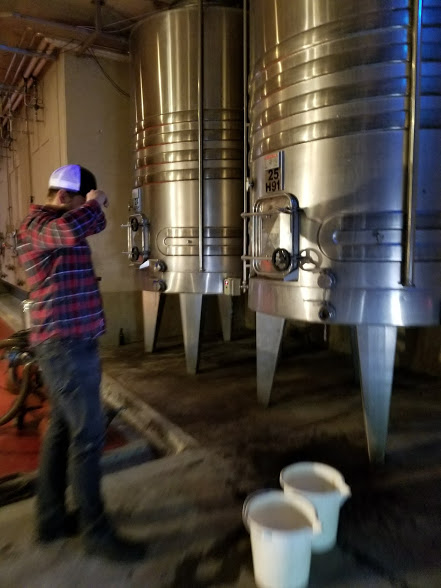
Inoculation
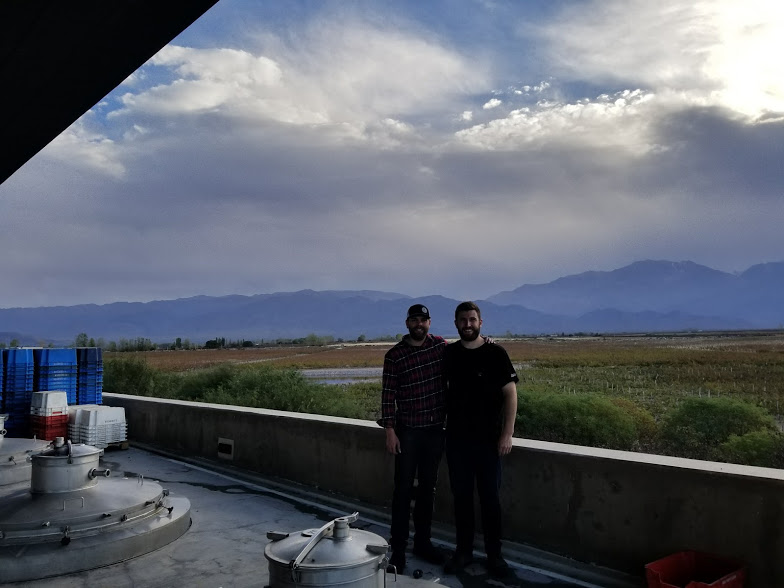
Thanks to Andrew for letting me tag along.
There's so much I can take away from this trip to help me in my winemaking journey.
Make sure to go taste his wines if you haven't yet!
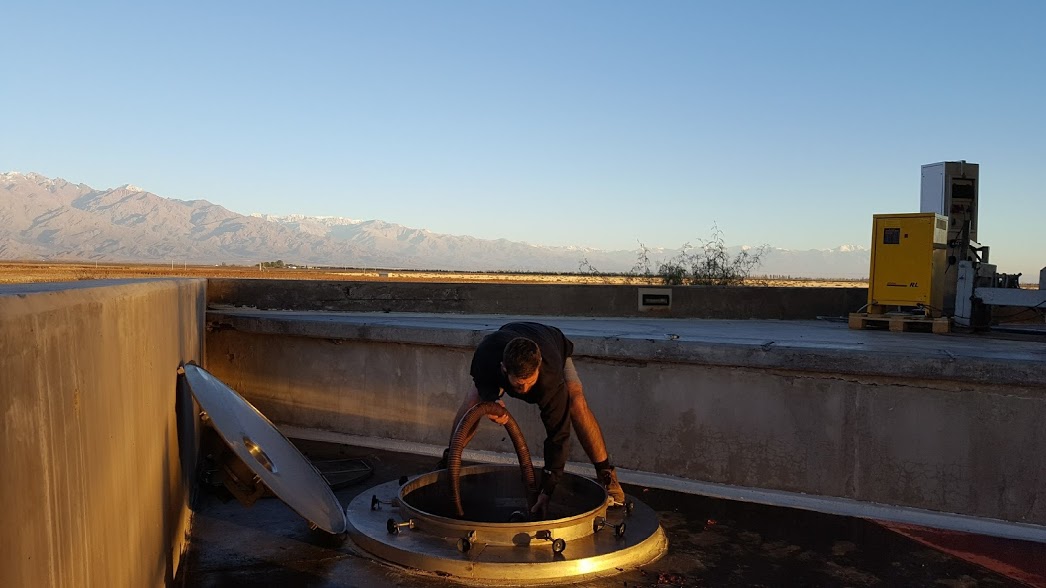
Come see me in the tasing room this weekend!
Quintessence Vineyard
With 3 different releases coming out of one of our favorite vineyard sites next month I wanted to look at the history of our relationship with Quintessence vineyard and what makes their site so special.
History
Quintessence is a young site with the first phase of planting taking place in 2010. The first fruit we pulled from this initial phase was cabernet in 2012 which blew us away with the quality for such young vines. So much so, that we decided to blend the clones 169 and 191 Cab into a single vineyard Cabernet, and our Optu Red Mountain for that same year was 47% sourced from Quintessence. This was the beginning of a love affair – since then we’ve made 3 more single vineyard cabs (always sourced from those same French ENTAV clones), 2 single vineyard sauv blancs, a new single vineyard malbec, and likely more vineyard designated wines to come.
Slope
While the general slope of Red Mountain gently angles to the Southwest, Quintessence is slightly more Southeastern facing right into the teeth of the morning sun. This early morning heat and rocky top layer that retains and reflects that solar energy is why I think Quintessence is consistently one of the first sites to ripen in the AVA and results in extremely concentrated wines across the board.
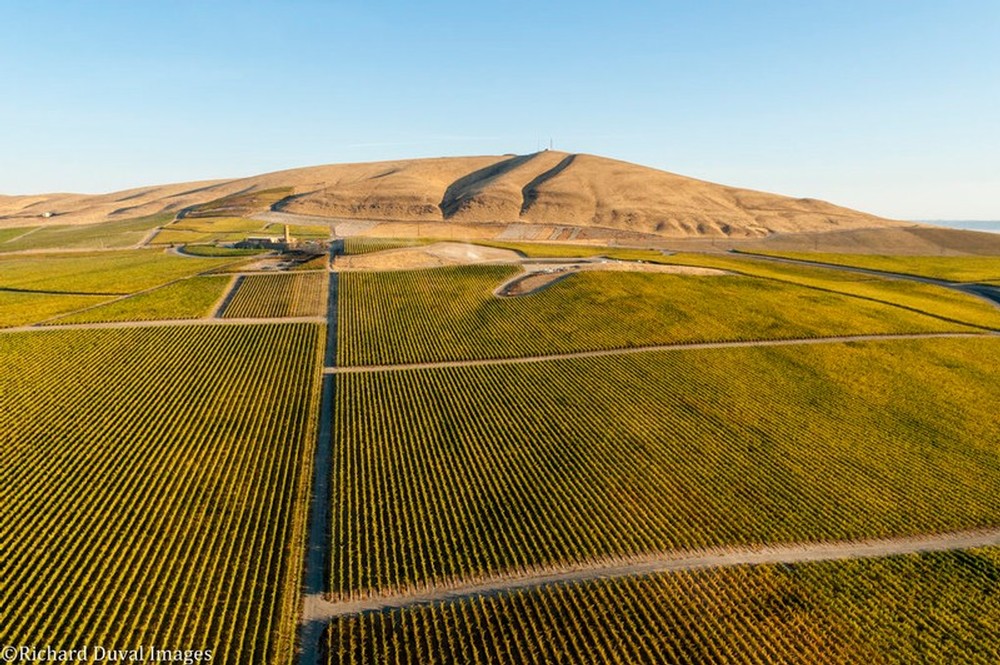
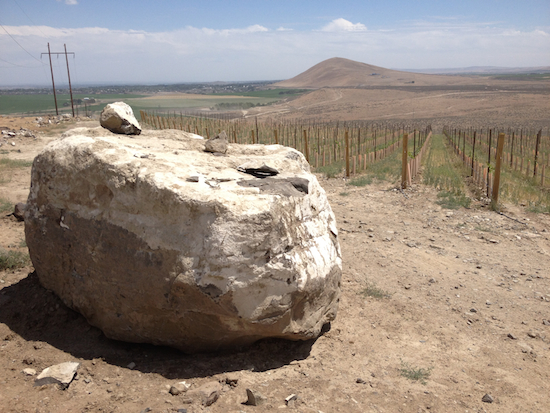
Management
An incredible vineyard site can only take you so far if it's not placed in the right hands. Luckily Quintessence has Marshall Edwards to look after it, who like my dad, has over 3 decades of experience managing some of the best vineyards in Washington to draw on. It's great that the two of them have known each other for so long too, because Marshall enjoys harassing my dad: last time we were there for harvest a couple days before the first pick he told him that "all of the work was done - now don't mess things up."
One of the most unique aspects of Quintessence is all the different clones of Cabernet that are planted there: go wild and explore their interactive map. In one block you can taste the sweet, bright, red fruit, large clone 8 clusters and walk 10 yards to another block and taste the lower yielding ENTAV clones where the taste of the thick skins and seeds is much more present and the fruit tone darker.
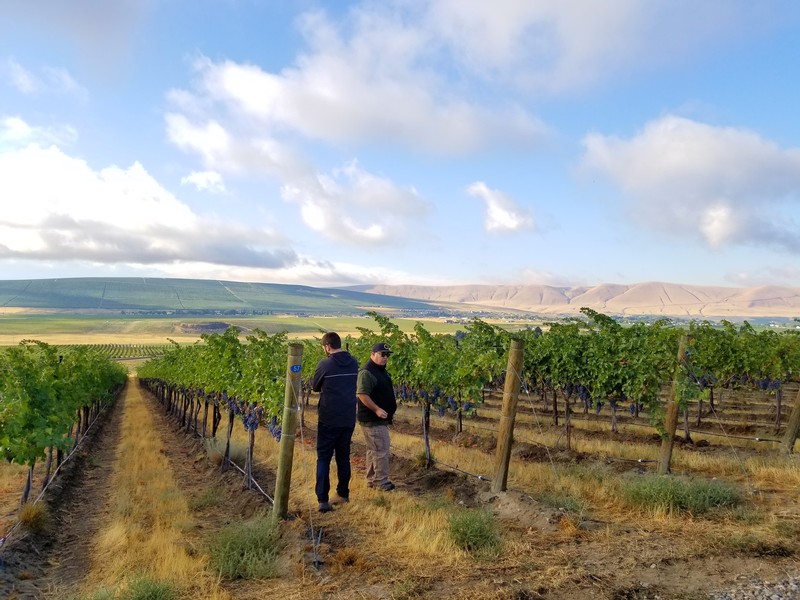
Harvest 2017 - making sure Marshall hadn't messed anything up
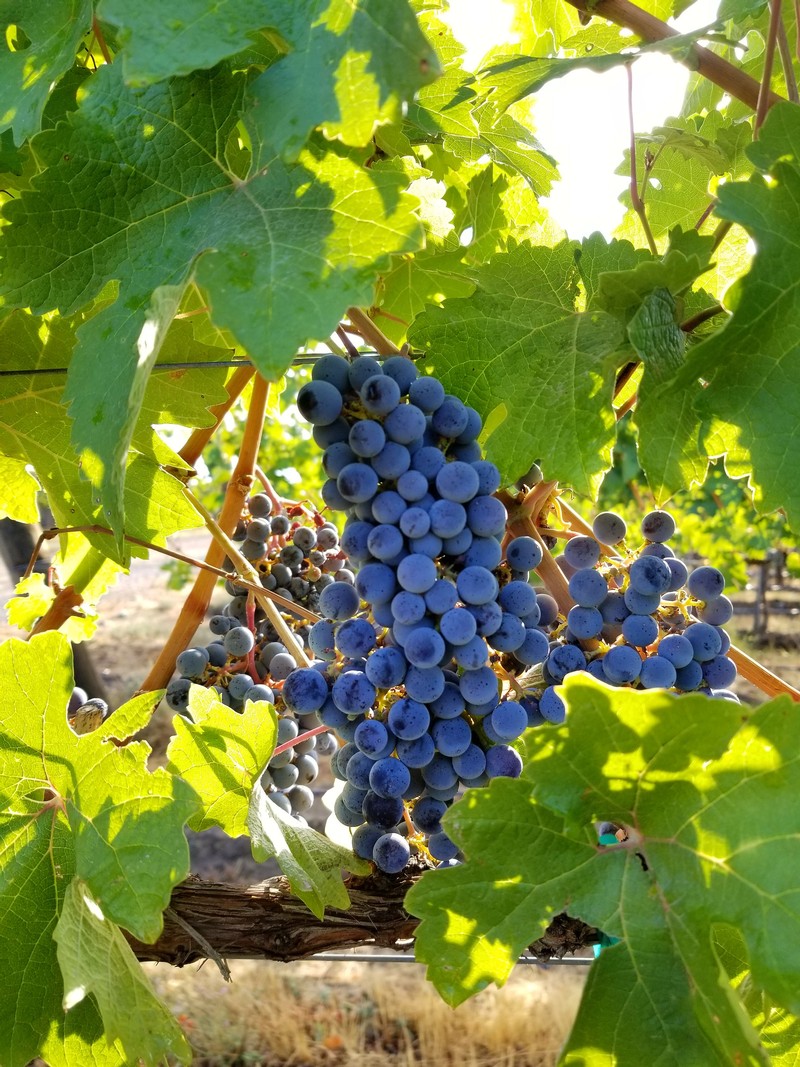
Quintessence Clone 8 Cab
Barrel Tasting
Often the winemaking team isn't sure what wines are going to be released for the upcoming year until they go through and taste all of the finished wine in barrel and see if anything jumps out at them. This is where we get small production releases such as Canyons Malbec, Ciel du Cheval Petit Verdot, Old Vines Merlot, and the upcoming April release Quintessence Malbec which will likely never make it to the tasting bar for long.
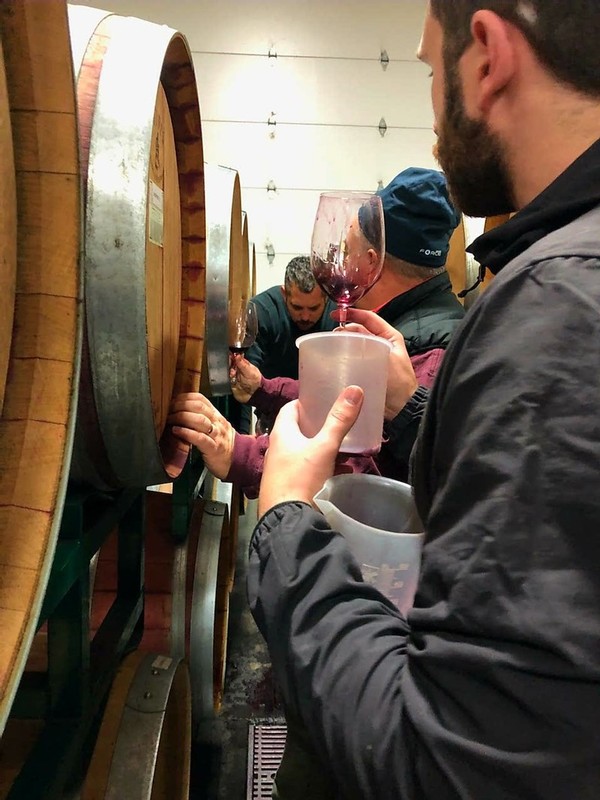
Tasting 2016 Quintessence Cab
More Information
http://www.quintessencevineyards.com/about.php
http://www.greatnorthwestwine.com/2017/05/09/marshall-edwards-grows-some-of-washingtons-top-wines/
New TCA-free Corks
When you first pop open one of our 2015 Red releases you may notice something a little different about the cork. We’ve switched from our traditionally used “bleached” cork (pictured on the left) to a more natural wash (right). As some of the industry is switching to screwcaps, synthetics, and other ways to seal off their bottles, we’ve taken a step back to a more classic look.
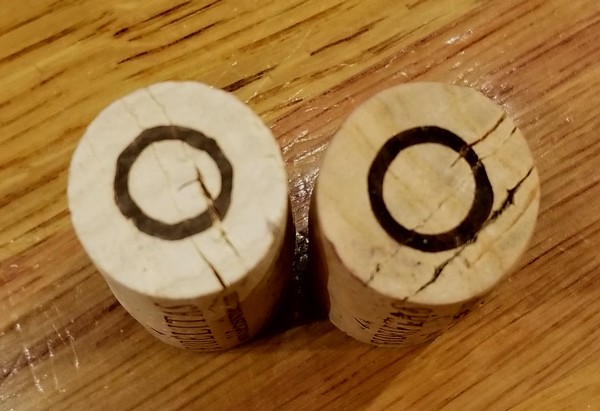
While taking a step back on appearance, we’ve made a simultaneous technological leap forward on performance. Chances are if you’ve been drinking Fidélitas long enough you’ve heard our mantra of being Faithful to Bordeaux grape varieties, Loyal to modern craft winemaking techniques, and True to Washington State's Red Mountain terroir. The switch to Portocork’s new Icon Certified closures is the perfect example of our dedication to modern craft winemaking, and as my dad put it: “a step closer in delivering the perfect bottle of wine.” We pride ourselves in not being tied to tradition and switching if something comes along that will help us make better wine.
Charlie's trip to the cork capital of the world: Portugal
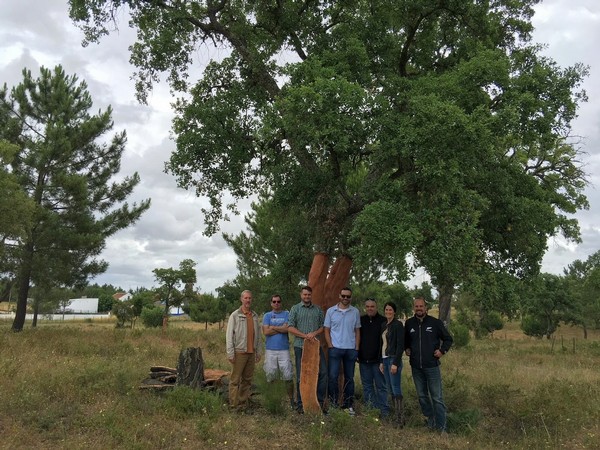
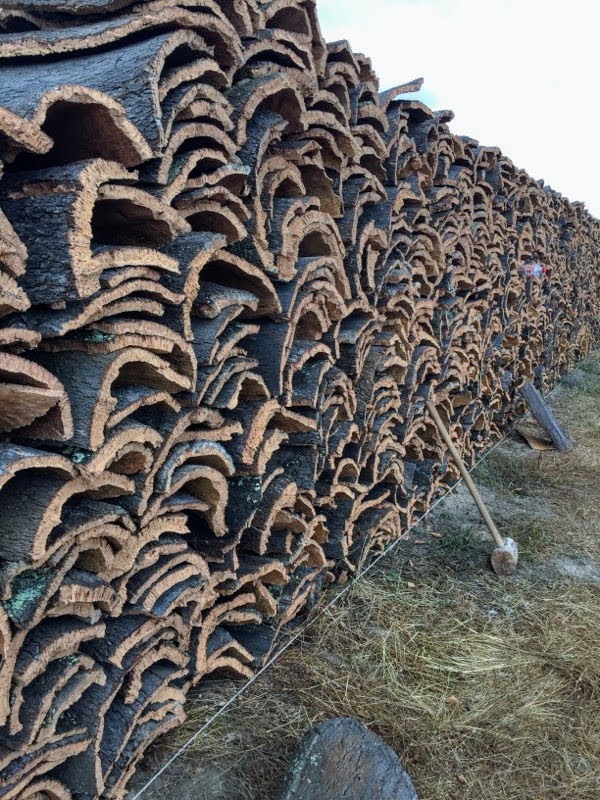
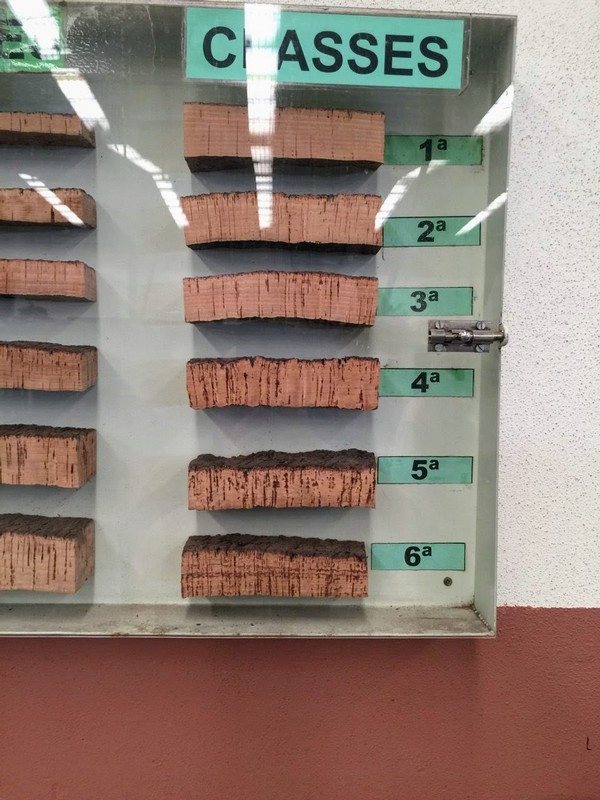
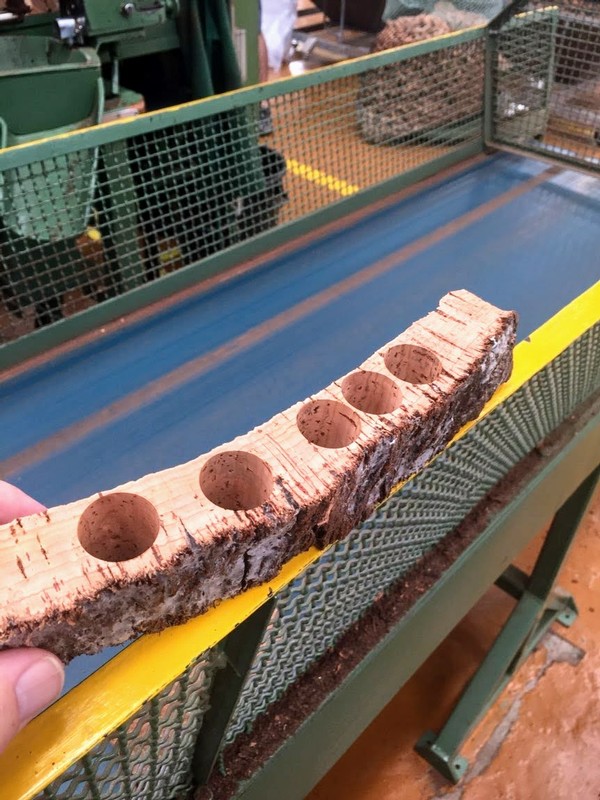
Natural corks have been the choice of winemakers for centuries due to their ability to let in just the right amount of oxygen allowing wine to age properly (info on diffusion vs. permeation). Problems with natural cork material causing the switch to the other types of closures is 1) the chemical compound 2,4,6 Trichloroanisole (TCA) may be present causing cork taint – the unpleasant wet cardboard or musty basement smell we’ve all experienced or 2) inconsistent density – a good example of this is opening an older bottle of wine which should be aged perfectly, however you pull out a squishy cork, too much oxygen has been let through, and the wine is prematurely past its prime.
Thanks to advancements by our supplying partner, Portocork, we have put these natural cork problems in the past. Their NDtech screening method along with other quality controls “effectively eliminates the risk of cork taint” by getting rid of any corks that have TCA content above the human detection threshold of 0.5 nanograms/liter + each cork density is tested for consistency in aging.
Hopefully you'll stop to appreciate all the work that went in to something as simple-looking as a wine cork the next time you open up a bottle of Fidélitas.
Cheers to the pursuit of Red Mountain Wine perfection,
Will
Year in Review
As the year winds down and plans are being made to get together with family for the holidays, I thought I'd take a look back at my year and journey coming back to Fidelitas. I get asked in the tasting how long I've worked for Fidelitas, and I can proudly say that one of my first memories is placing capsules on the first run of 2000 Meritage - I still need to dig those pictures out of the basement. Anyways, here's a small sample of what is hopefully many more vintages, long days at the cellar and tasting room, and many more bottles of Fidelitas!
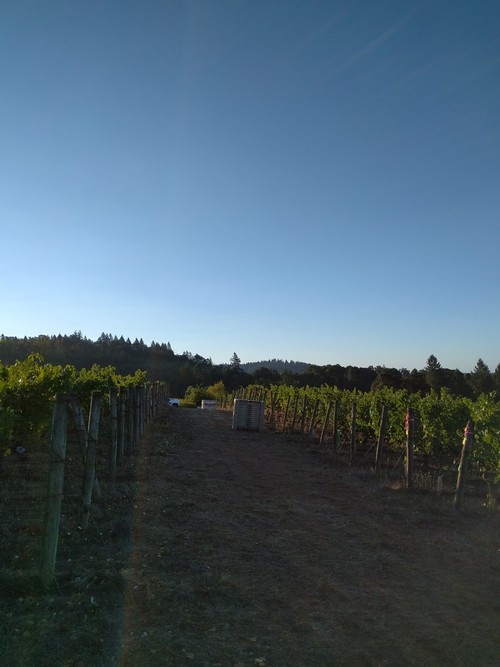
Working Harvest 2016 in the Willamette Valley
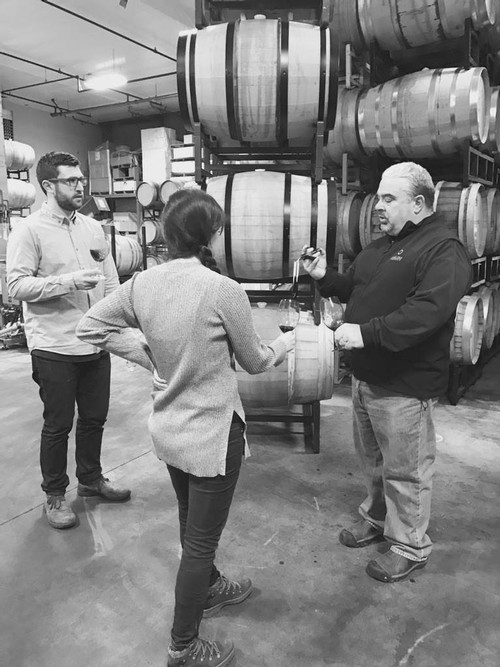
January barrel tasting at Wine Boss
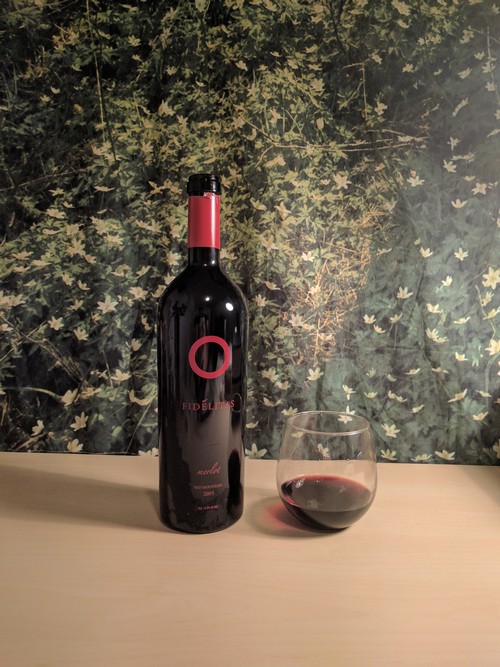
Finding gems like this in my dad's cellar - 2005 Red Mountain Merlot - one of the first Red Mountain wines Fidelitas ever made.
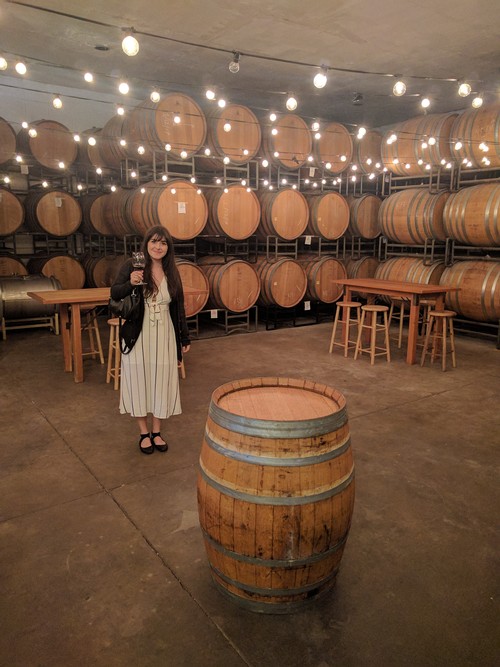
Market research in Santa Barbara
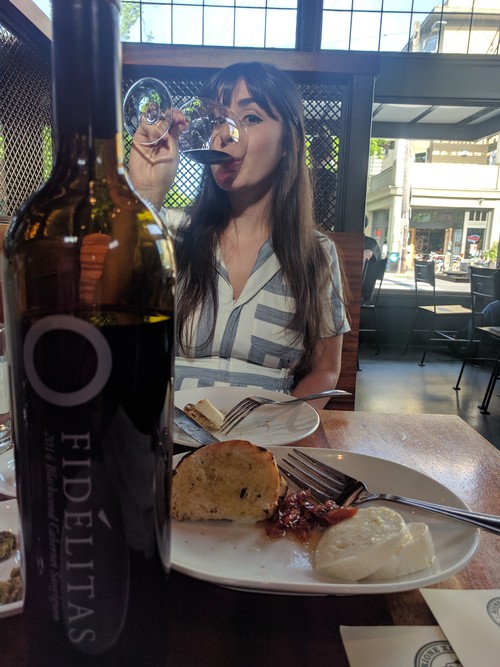
Celebrating a birthday with my 2 favorites at Rione XIII - Jessica, and 2014 Blackwood Canyon Cab.
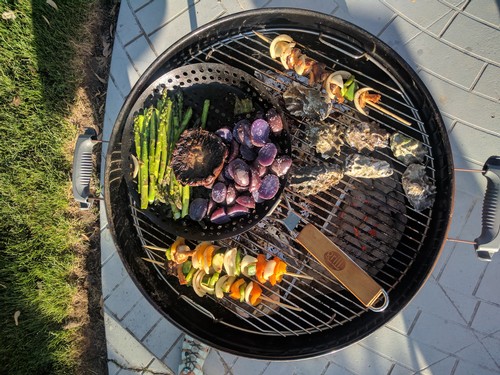
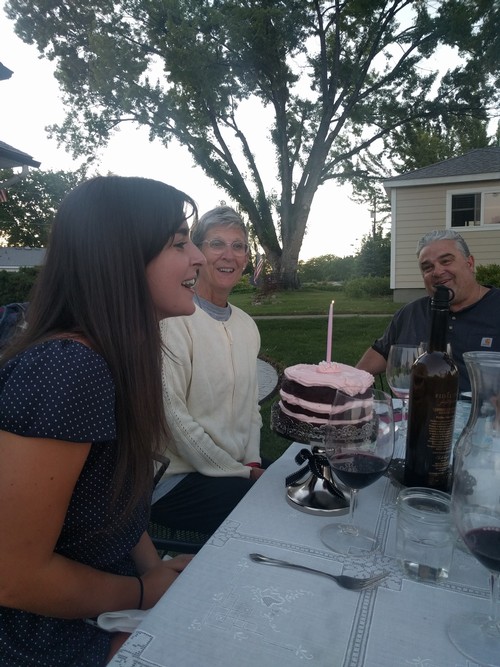
Tasting some Heitz Cellar Martha's Vineyard Cab alongside the original 2012 Fidelitas Estate Cab - everyone seems pretty happy.
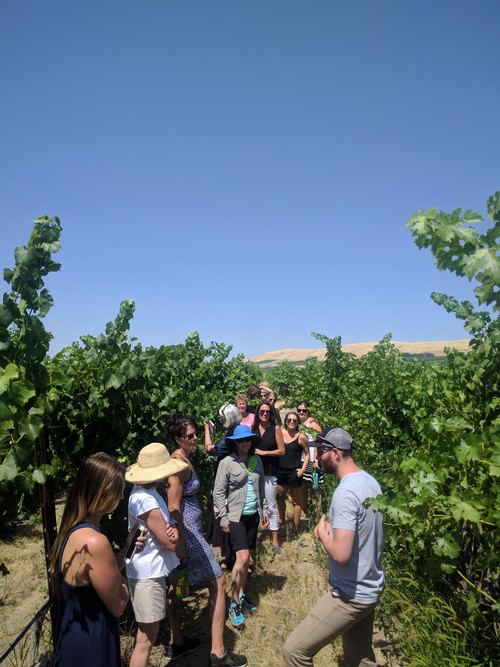
Staff vineyard tours at Kiona.
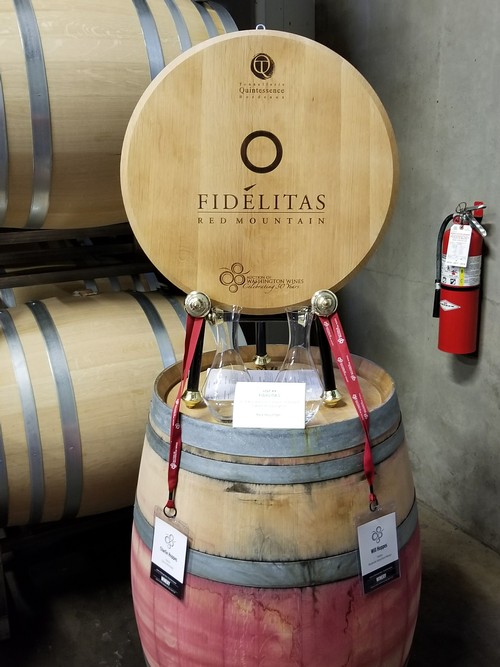
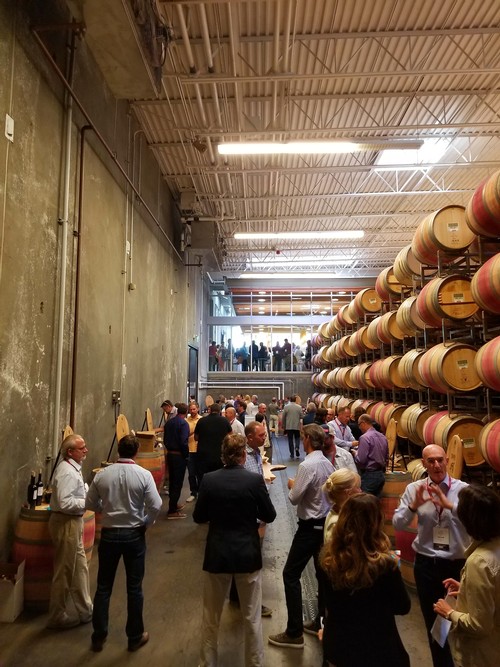
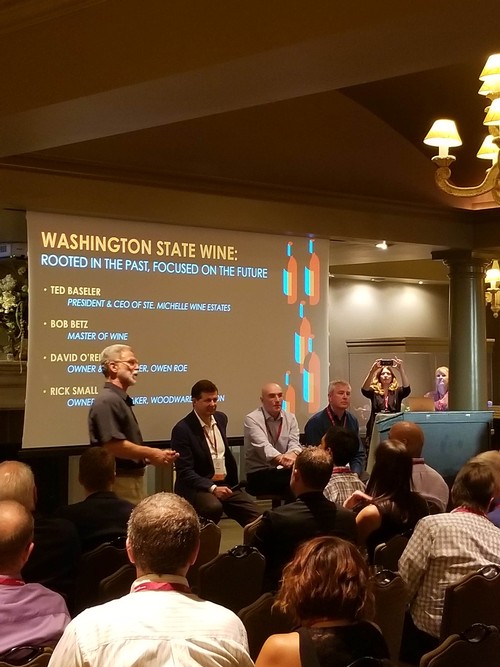
Washington Barrel Auction with some WA wine legends.

Checking out Quintessence Cab a couple weeks before harvest.
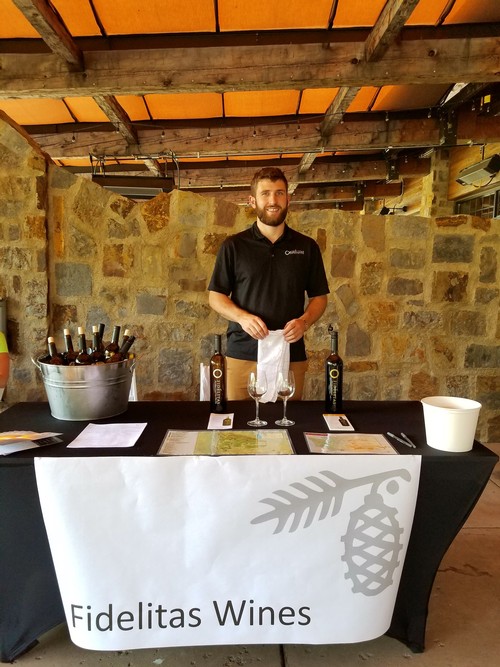
Wine and Pines event at Swiftwater Cellars, Suncadia.
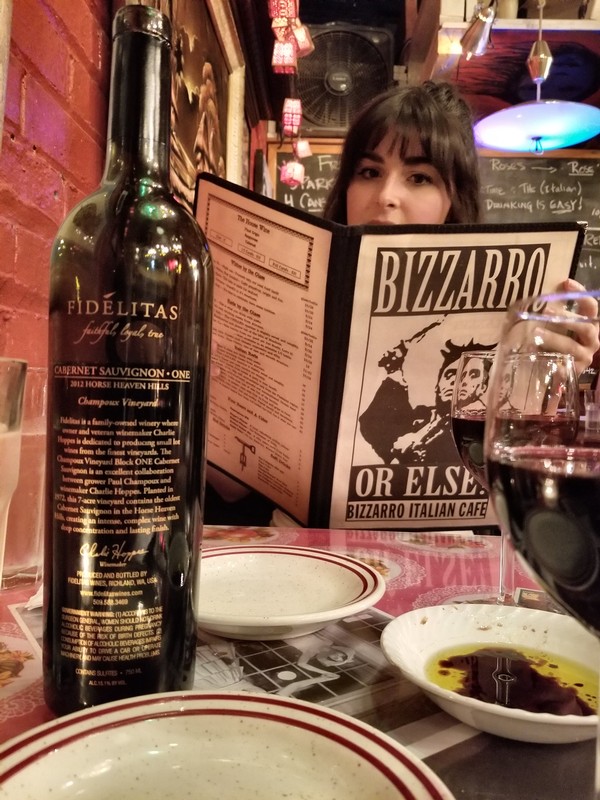
Top 10 meals of all time - 2012 Champoux Block One with Bizarro Cafe meatballs.
Happy Holidays from Team Fidelitas!
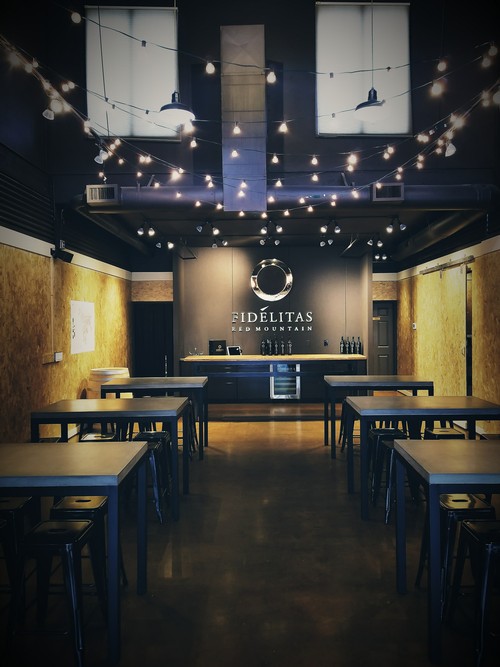
Micro-Blocks of Ciel du Cheval
Long before the place we call home became riddled with award winning vineyards, wineries, and wines; 2 former General Electric engineers turned wine visionaries planted the first Red Mountain vines in 1975. Scott Williams of Kiona and Jim Holmes of Ciel du Cheval. My dad has recognized the quality from CDC for quite some time – our Ciel du Cheval Cabernet which has become a Fidélitas staple was first produced in 2006. But what is it about Ciel that makes it so special? I doubt this blog post will do 42 years of intensive vineyard management justice, and with terroir it seems there’s only so much we can explain – but here is one of my favorite characteristics:
1, 100-acre vineyard – 39 separate blocks. One of the ways that old vineyards become so unique and sought-afer is how different the individual plants become over time. A little different slope here, slighty more sunlight there, even an irrigation pipe that drips water at a faster rate. All these differences cause each of the plants to develop their own personalities – even if 100 acres or so are all the same exact root stock to begin with.
CDC takes it one step further. Making up some 102 total acres here are 36 separate blocks planted with an average size of 2.8 acres. Each one with its own row orientation, plant spacing, training methods, etc… to create individual terroirs at a micro level. The vineyard management is exhausting and would be much easier to farm the 100 acres in a uniform manner, but this small-lot method shows Holmes’ commitment to producing the best fruit possible. The methodology reminds me of our winemaking team which uses all sorts fermentation vessels, yeasts, and barrels to have multiple components to work with for one wine. A bottle of Ciel du Cheval cabernet is way more complicated than it seems.
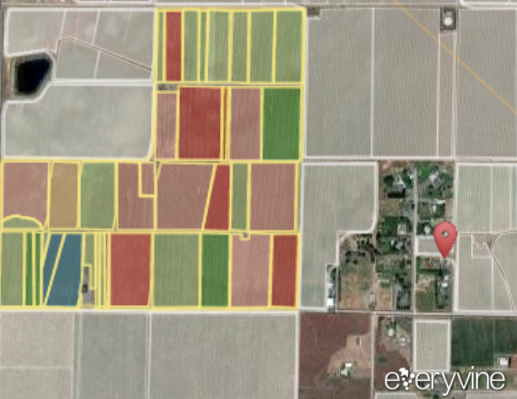
This strategy was used to combat the homogenous soils of the vineyard. Example of the sandy, well draining, high in calcium carbonate soil on Red Mountain:
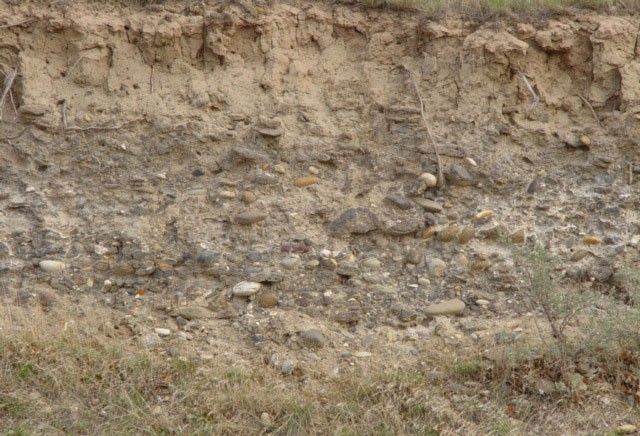
Ciel du Cheval in relation to Fidélitas (note the red hue of the “Red” Mountain cheatgrass):
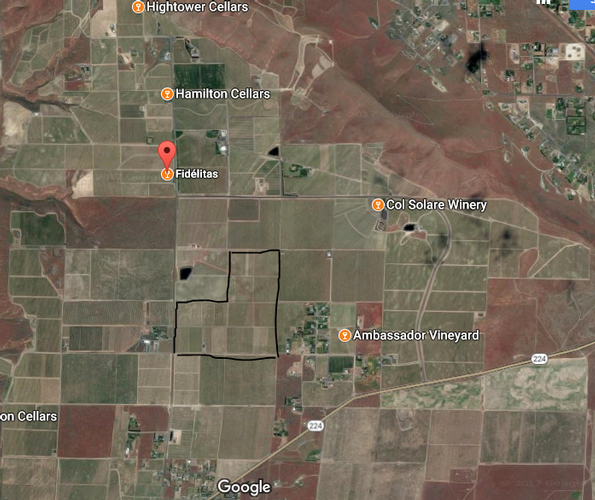
Harvest 2017
Walking around the vineyards with the Wine Boss a few days ago at the very start of harvest brought back some fond and not so fond (long hours) memories. Here are some interesting tidbits, musings, lessons learned, etc… from harvest:
The rain on Red Mountain isn’t as much of a pain as it is in the Willamette Valley. On Sunday of last week on my way from Seattle to Tri-Cities it had rained the whole way, including all night in the vineyards. Luckily the wind picked up that morning – as it always seems to do – dried off the fruit, and we were able to pick some Quintessence Cab early afternoon. Harvest 2016 in the Willamette Valley, from what I can remember, had fortunate weather. However with the chance of it raining more often and for longer periods at a time (it’s usually just short bursts in Eastern WA) and the Pinot Clusters being tighter and harder to dry precipitation definitely gives OR winemakers fits.
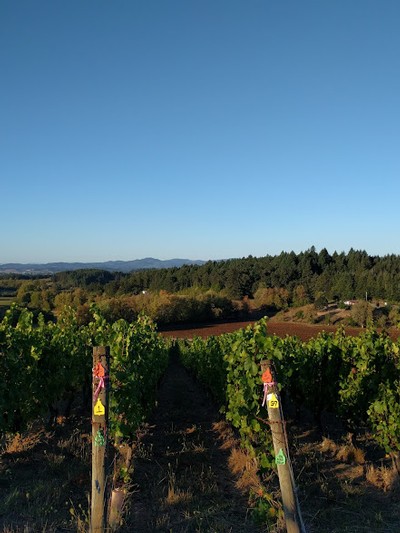
Harvest 2016 - Bishop Creek Vineyard, Willamette Valley
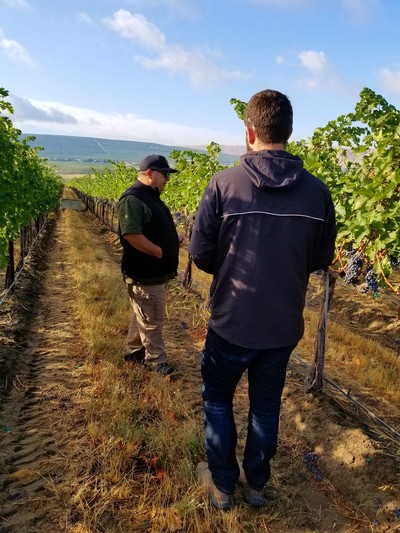
Sampling Cabernet at Quintessence
A vineyard looking more well-manicured (see Quintessence above) doesn’t mean it’s necessarily “better managed” – I think it’s more up to particular style of that vineyard manager. Perfectly groomed rows look amazing and you can appreciate the work that goes into them, however grape vines are wild plants and don’t need to be completely tamed to produce amazing fruit (see our Estate vineyard below).
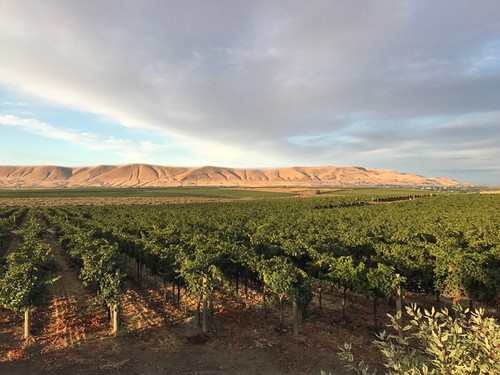
Estate Vineyard 9/21/2017
A roller fermenter only yields about 1 barrel of wine (25 cases) – this small quantity alone should tell you how much our winemaking team loves them vs. doing larger stainless steel fermentations.
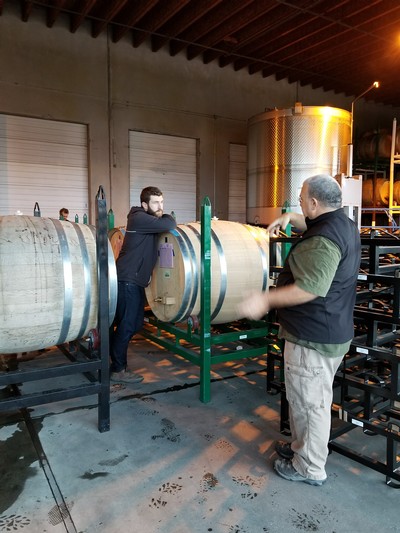
Grape-sampling and getting accurate Brix readings is a crucial part of making pick decisions. Here’s how I’ve been taught: pick at least 2 rows to walk down from the block that you’ll be sampling – take a certain number of steps, turn either left or right (switching back and forth each time), and choose the first cluster you see. With everything being handpicked you can assume that any green clusters or anything else that looks funky won’t be brought into the winery, but by making it as random as possible you avoid just selecting clusters that look delicious, or have a little green in them and getting an inaccurate reading.
The 2015 “Old Vines Merlot” is amazing and you can catch some pretty amazing sunrises in Tri-Cities getting up at 5 am to taste through fermentations. Cheers to a successful harvest.
